
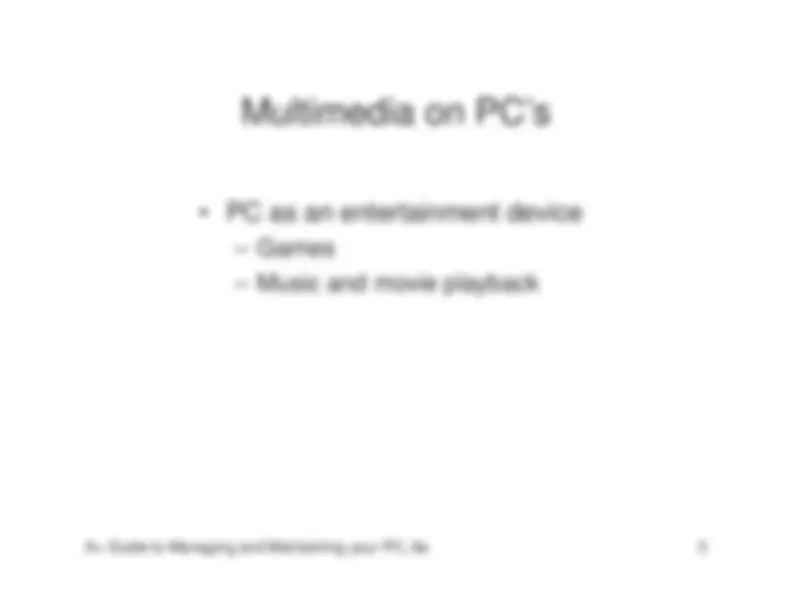
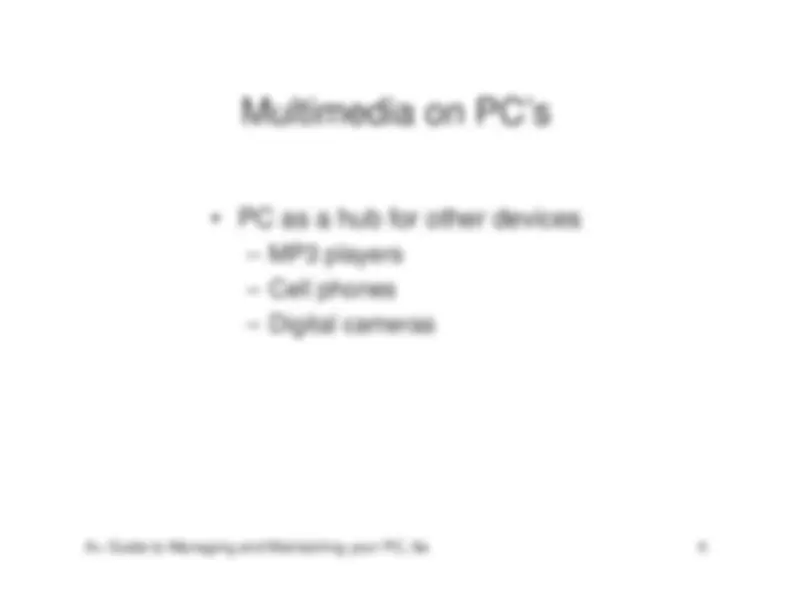
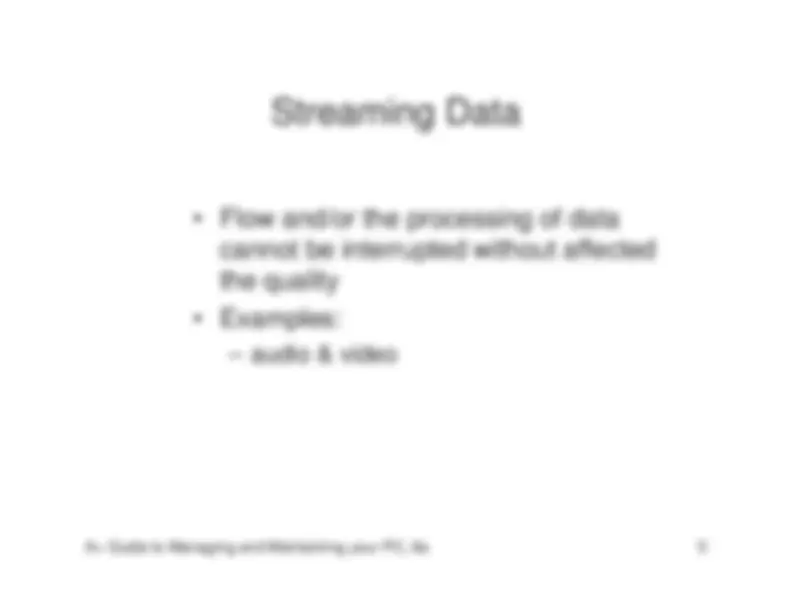
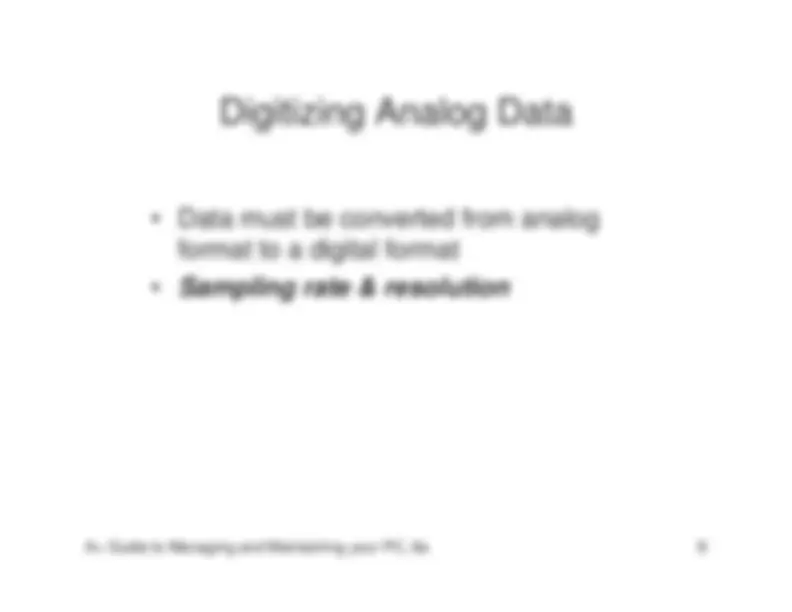
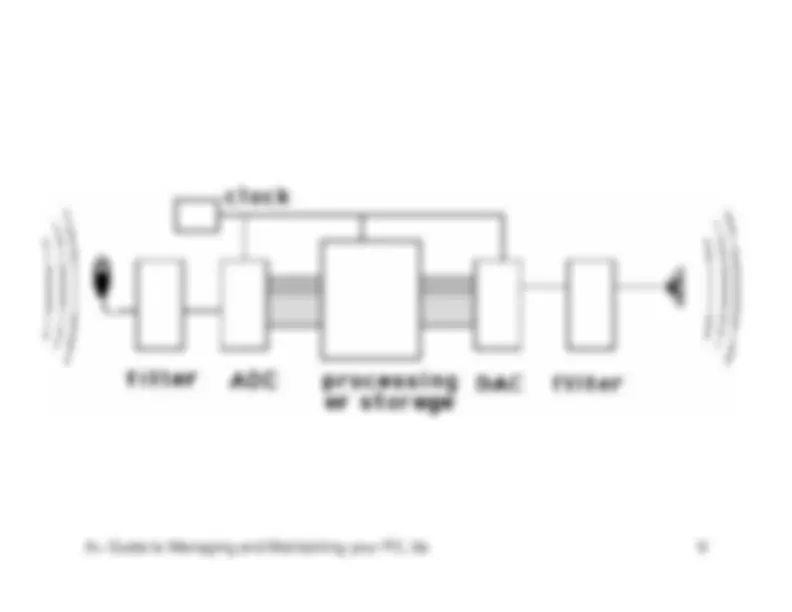

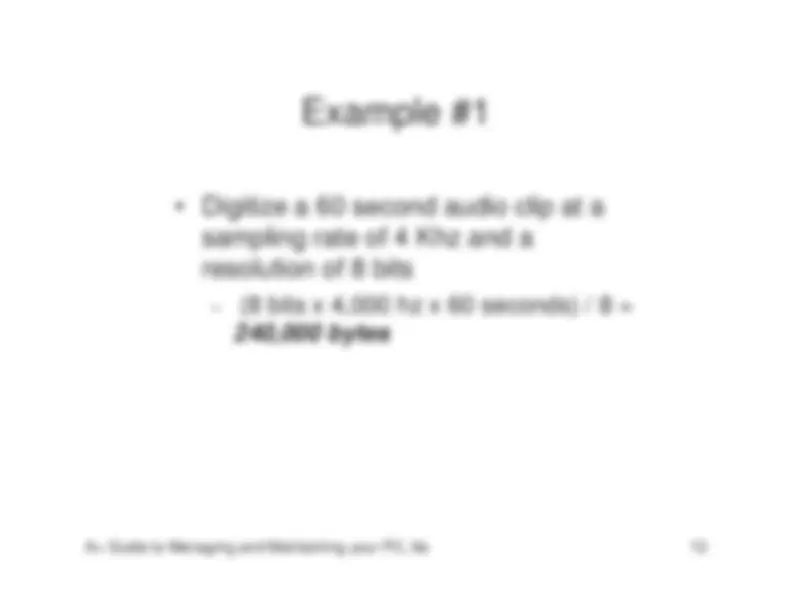
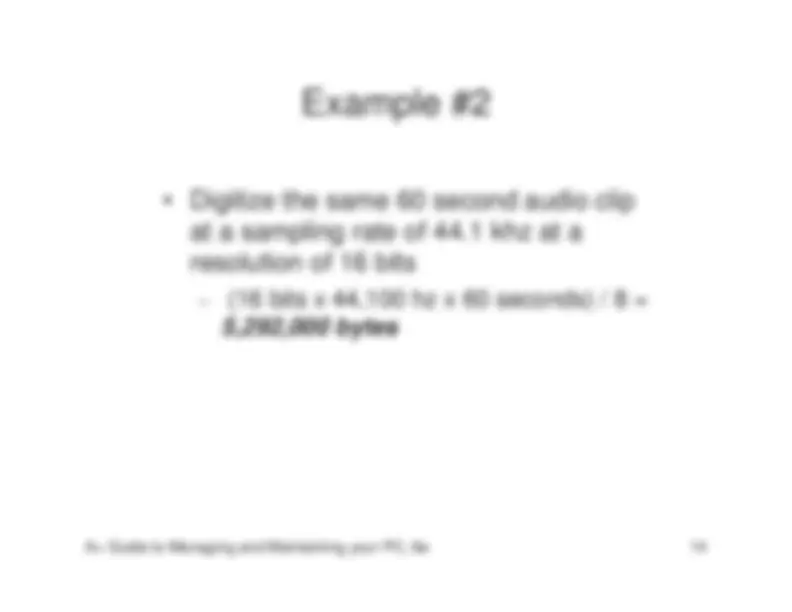
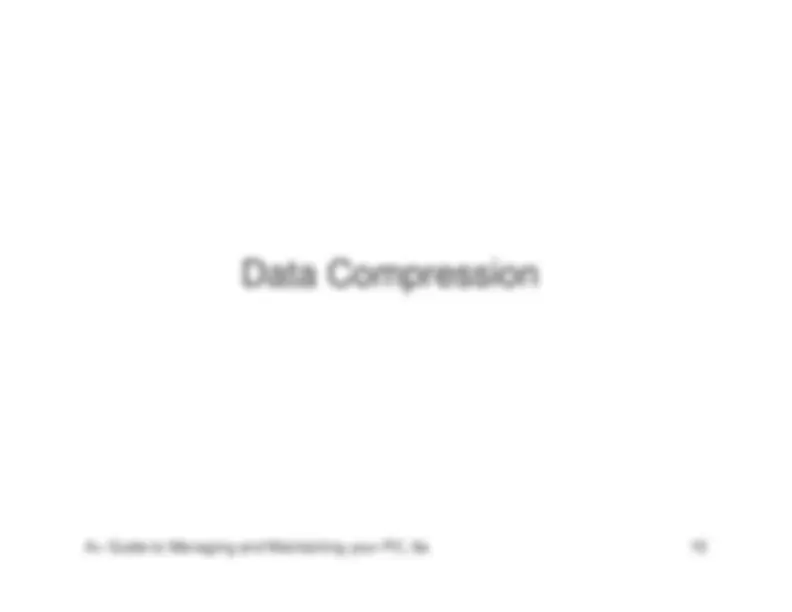

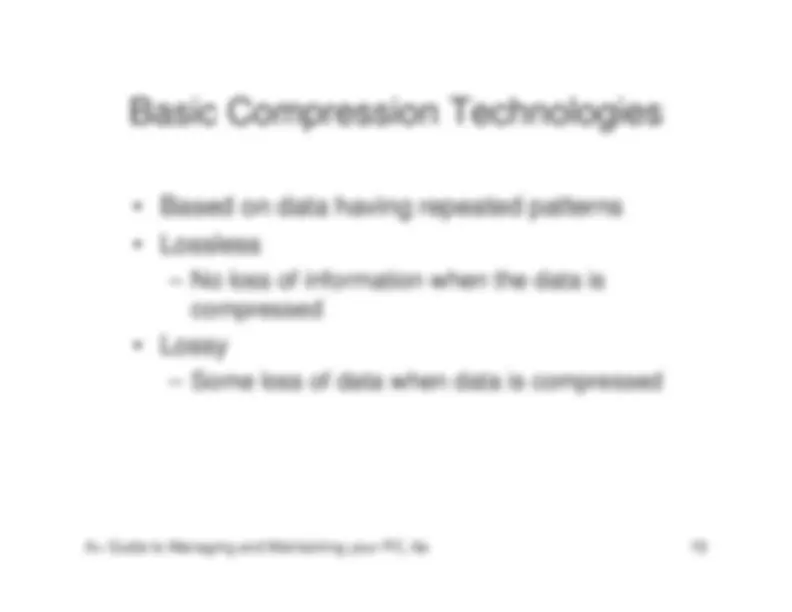
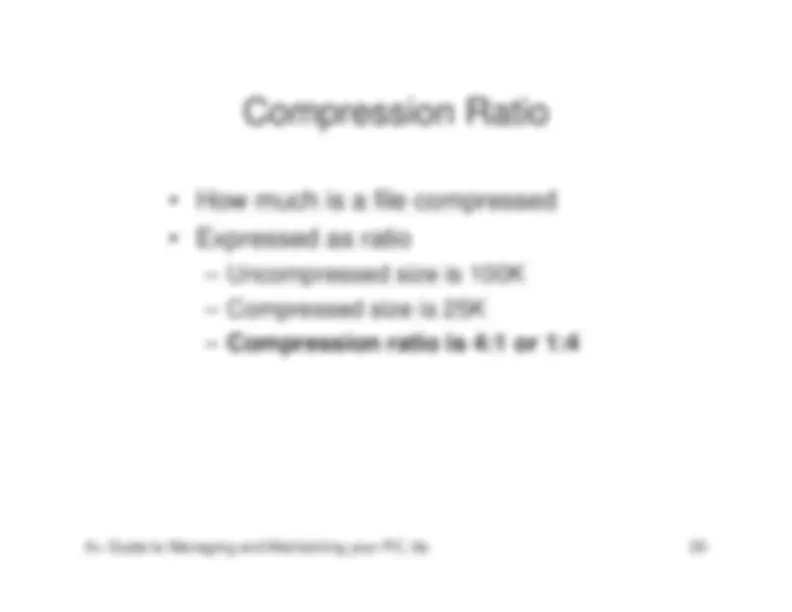
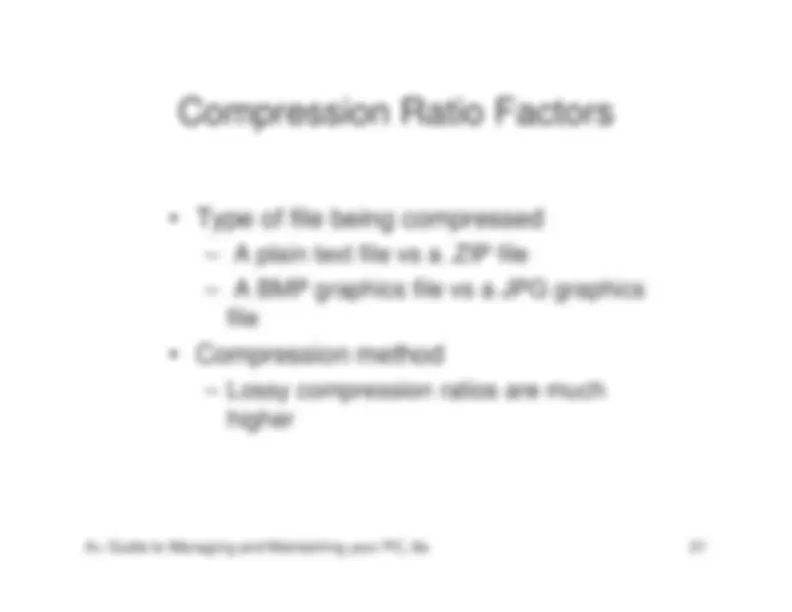
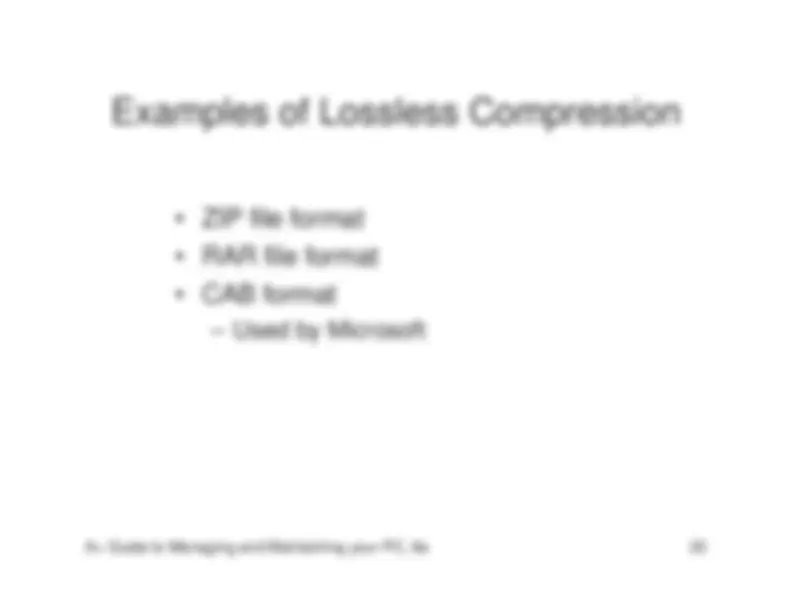
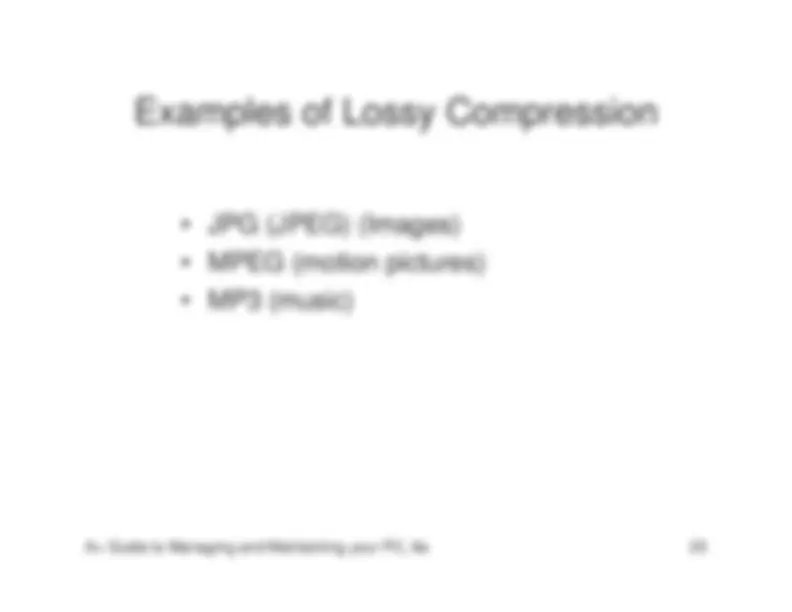
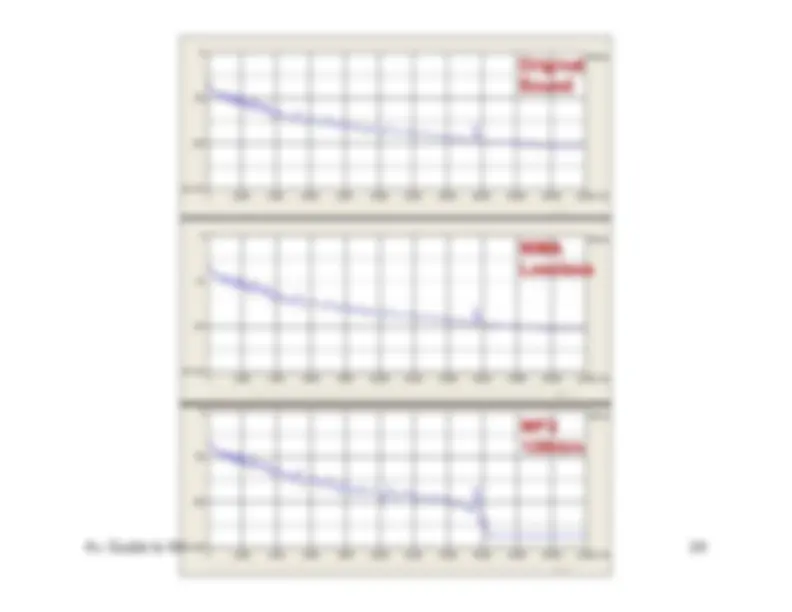
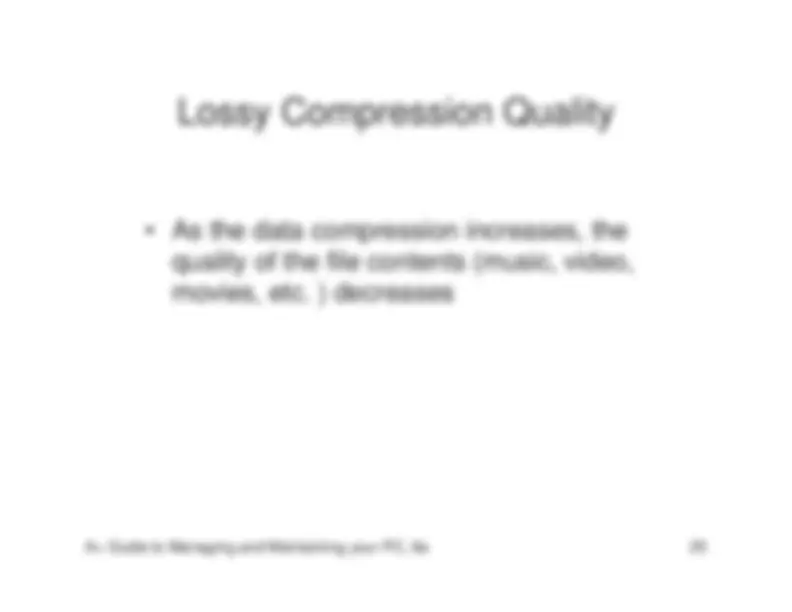
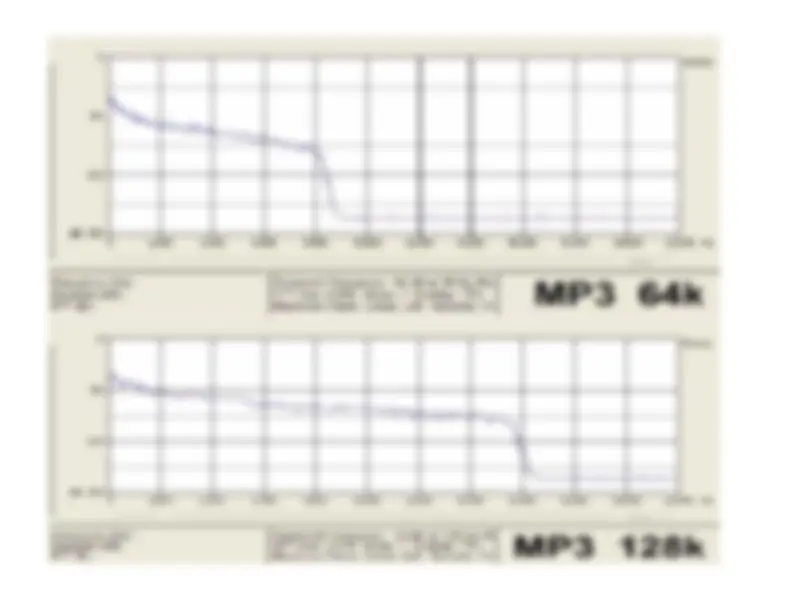
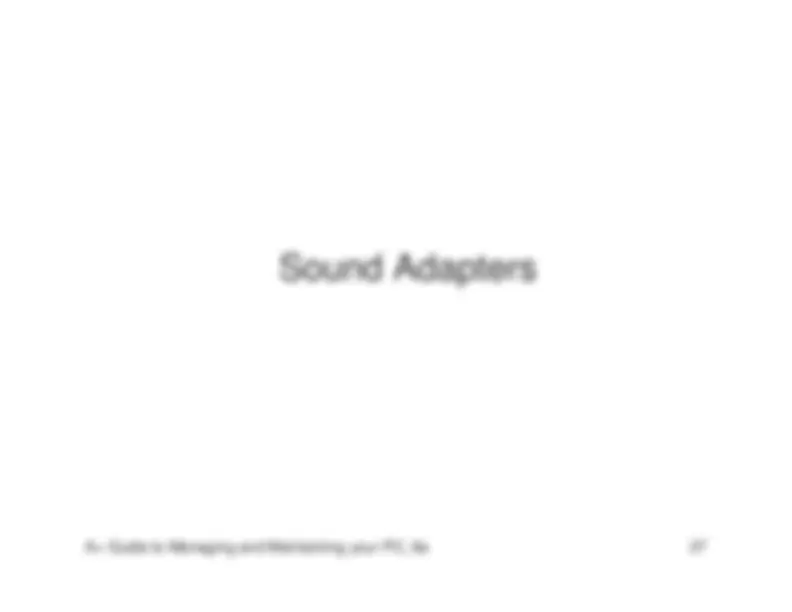

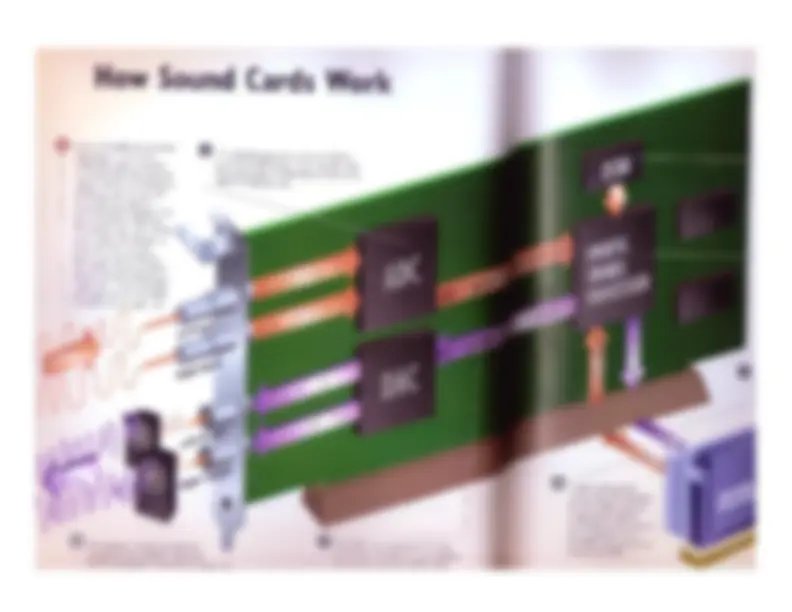
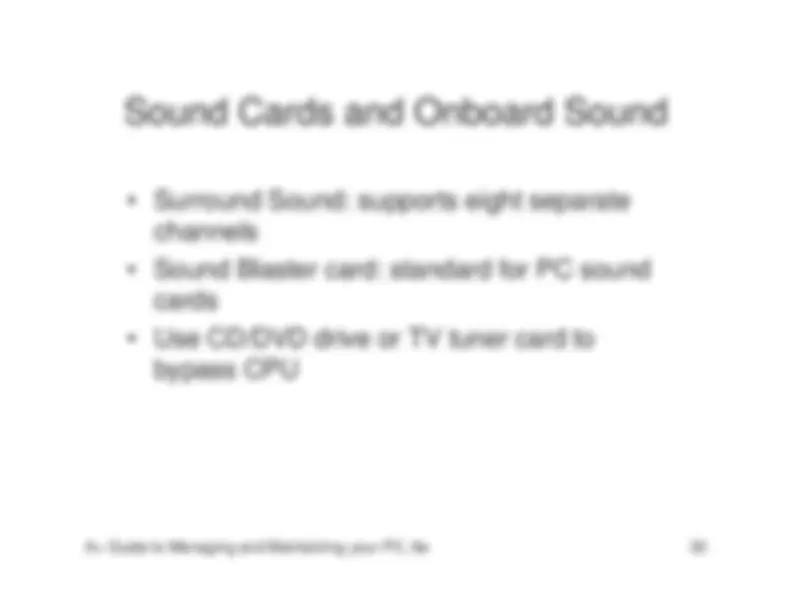
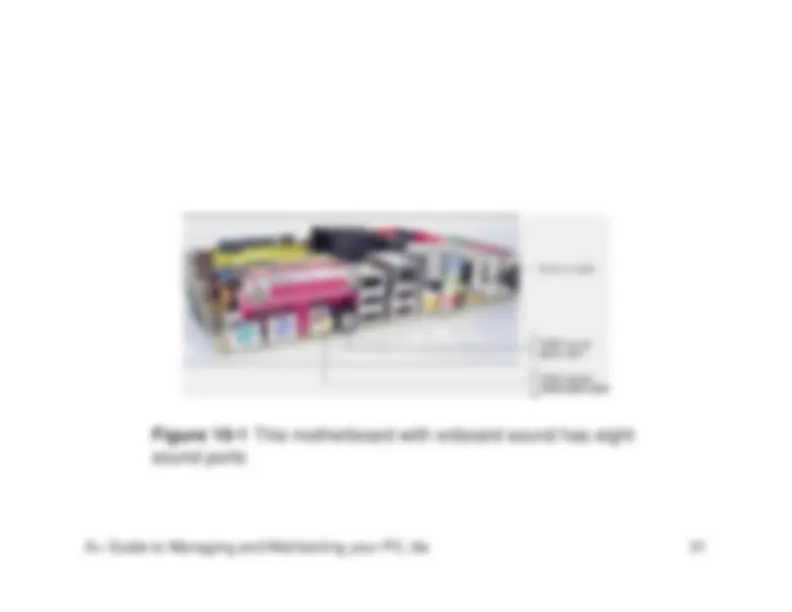
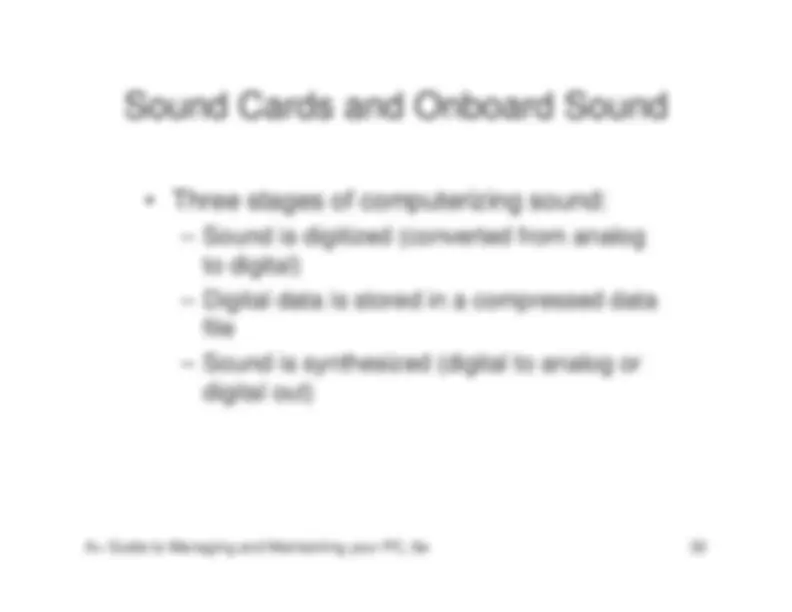
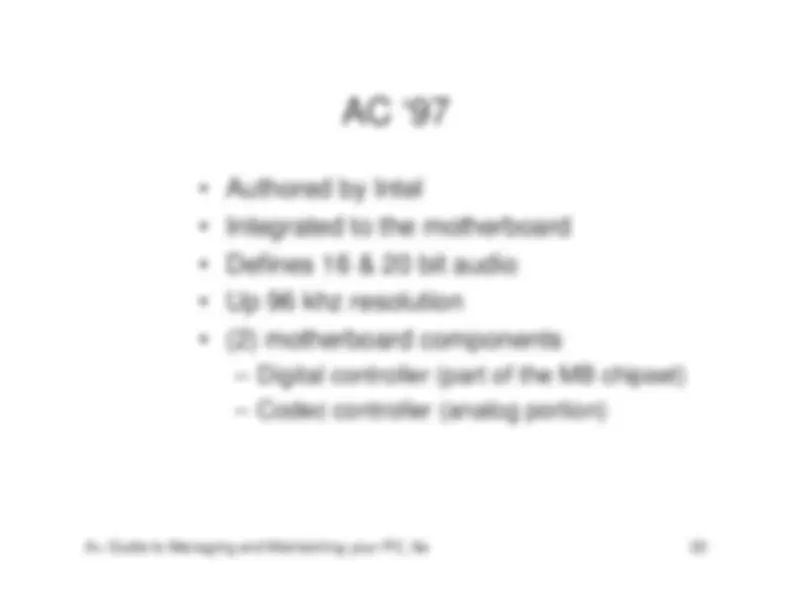
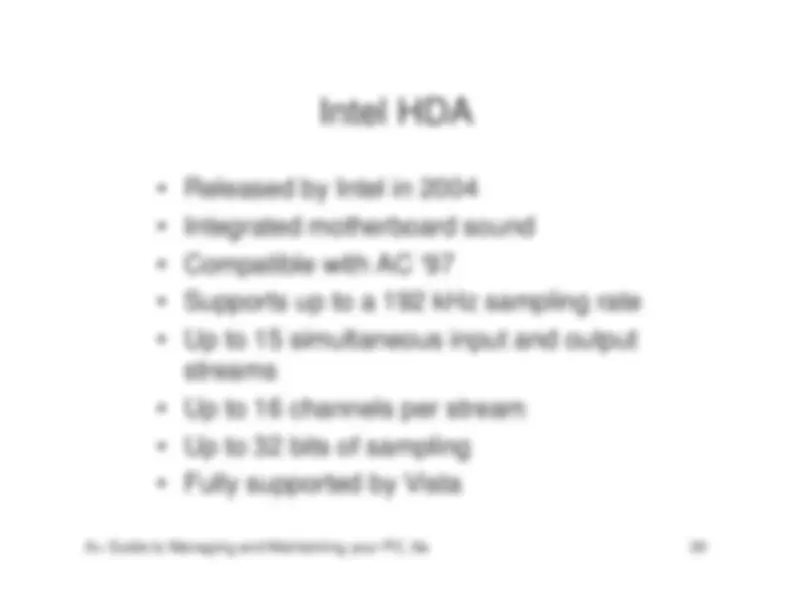
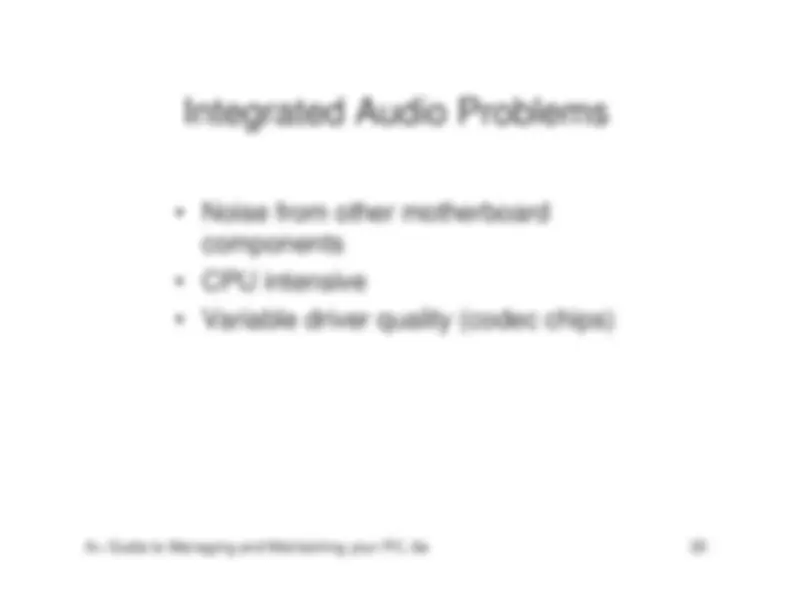
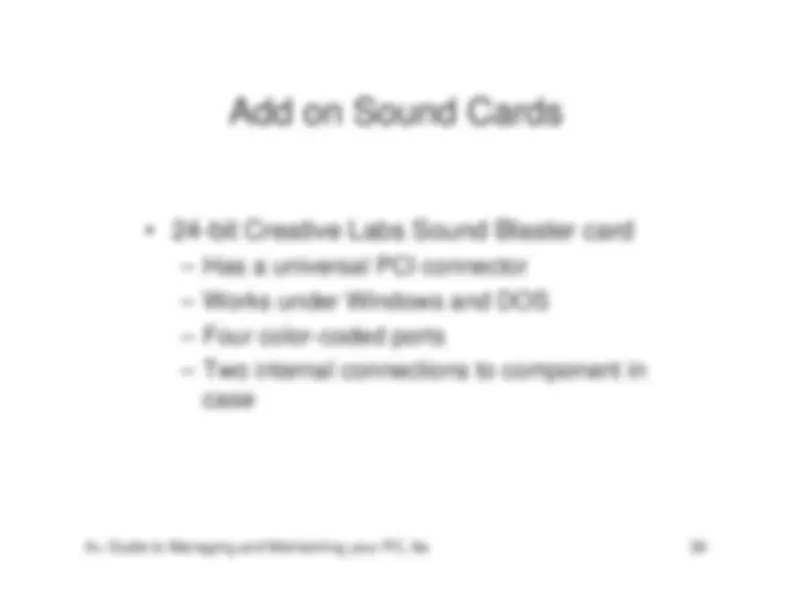
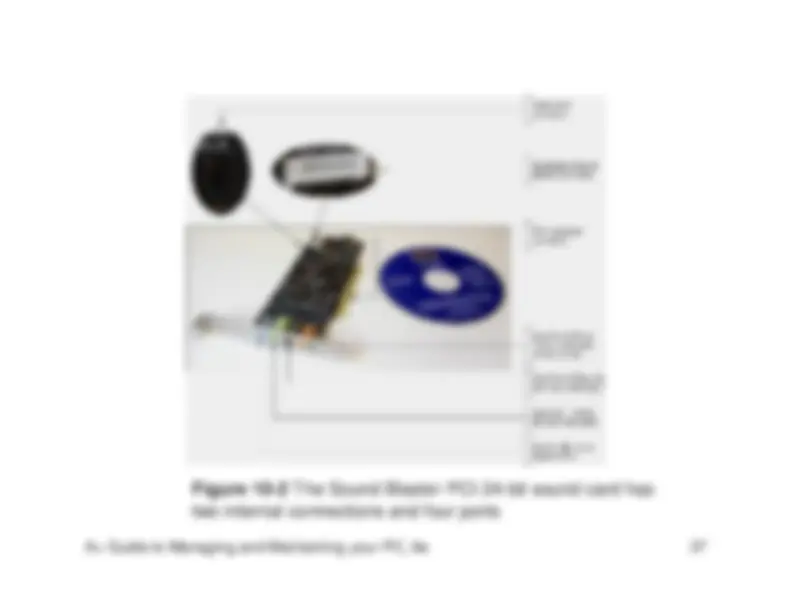
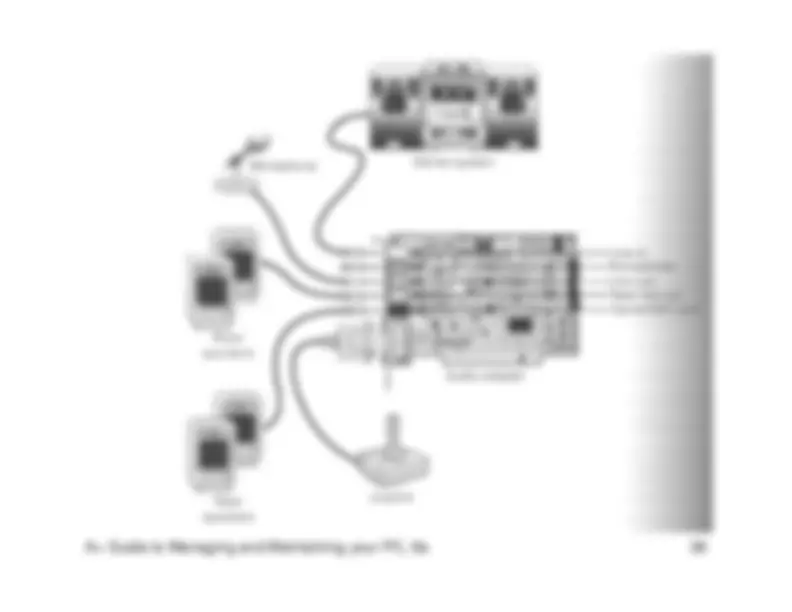
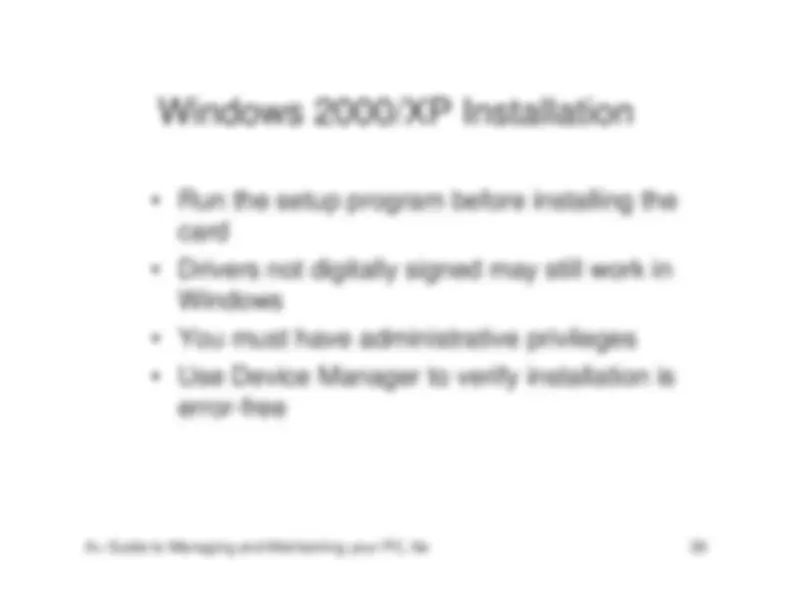
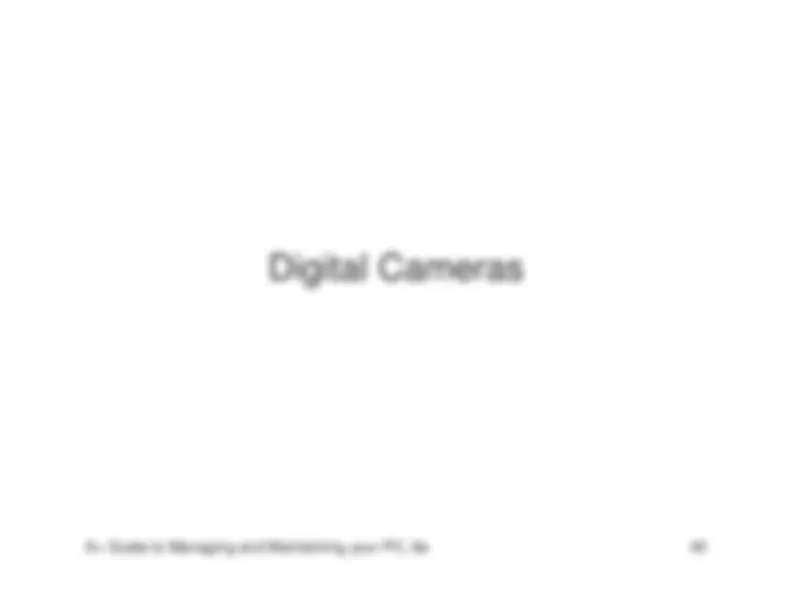
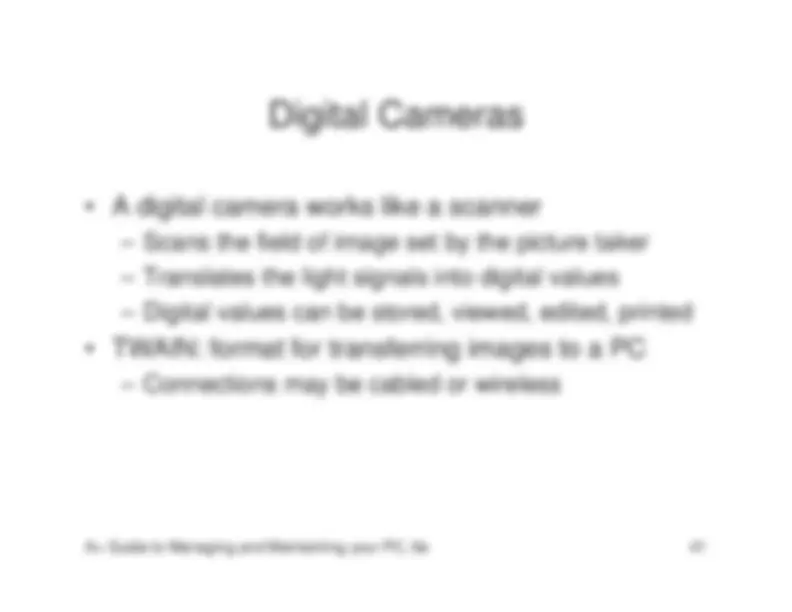
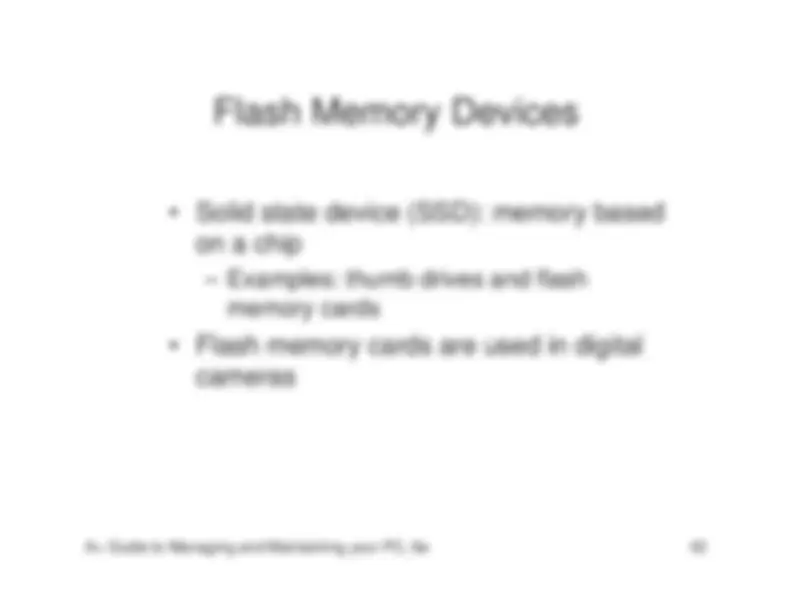
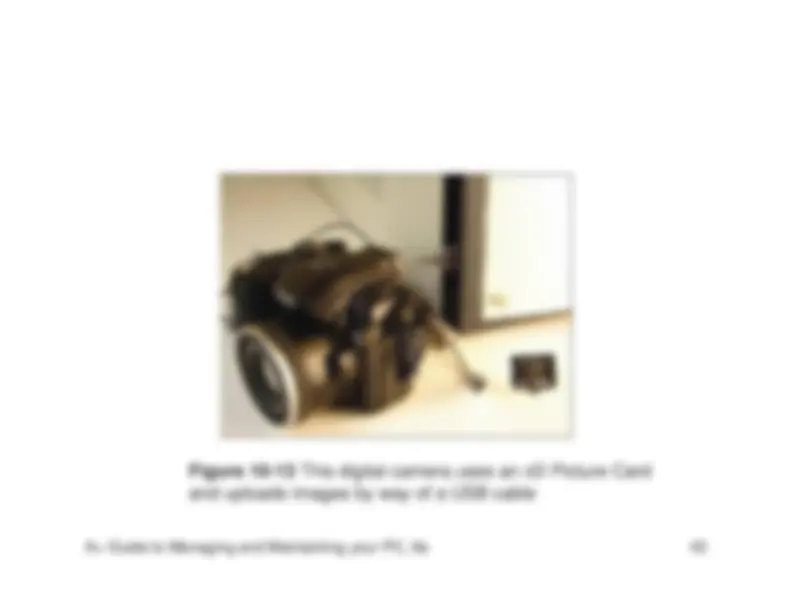

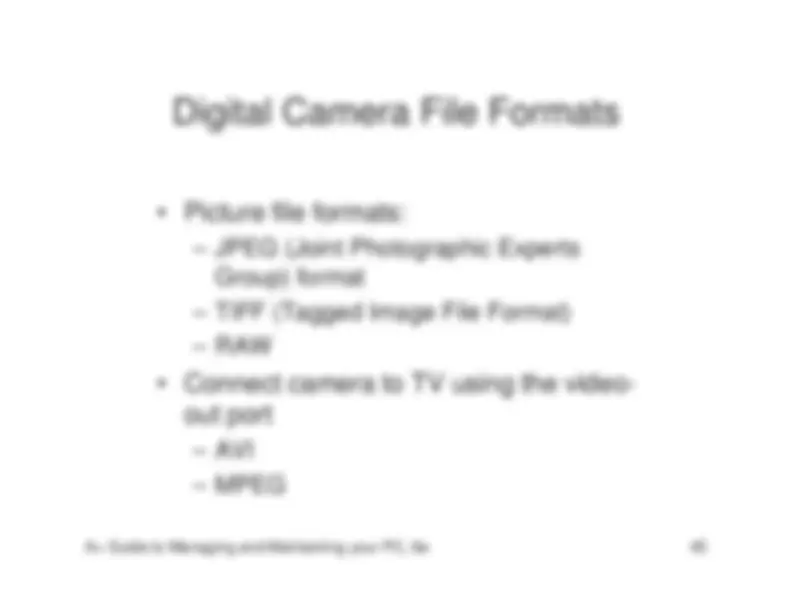

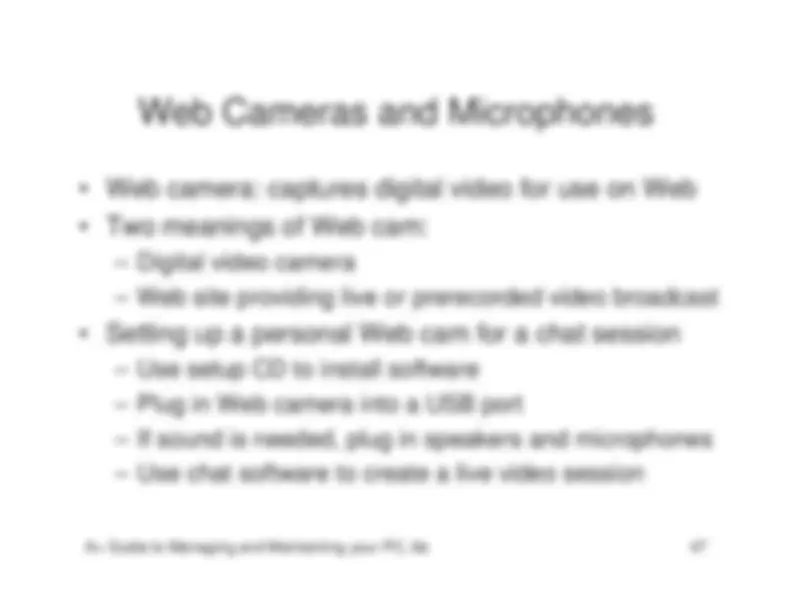
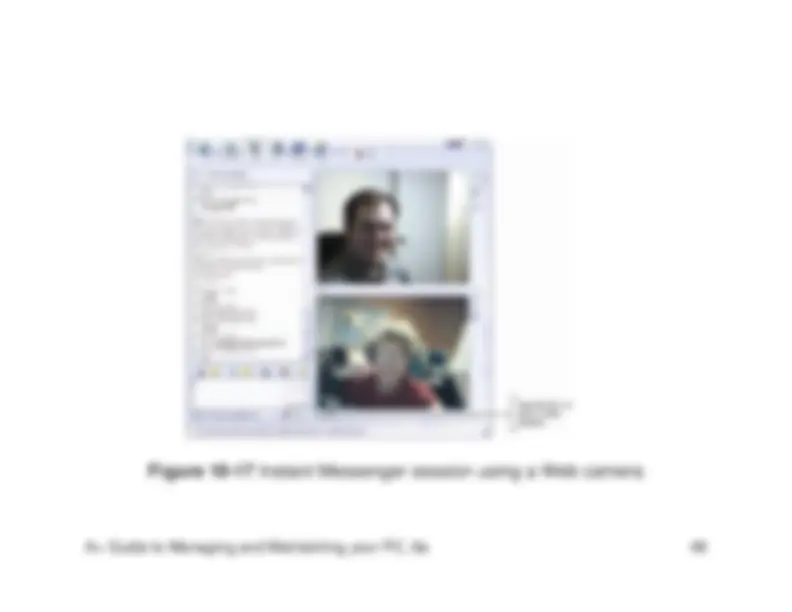
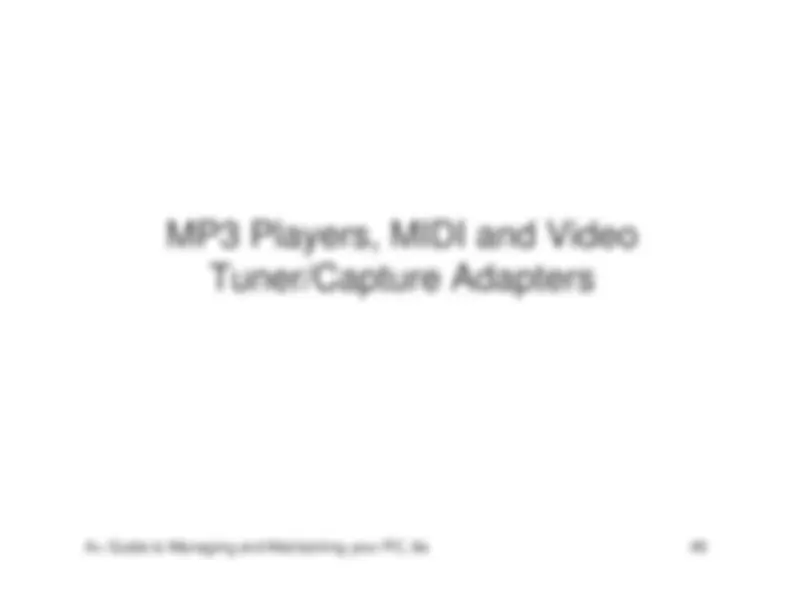
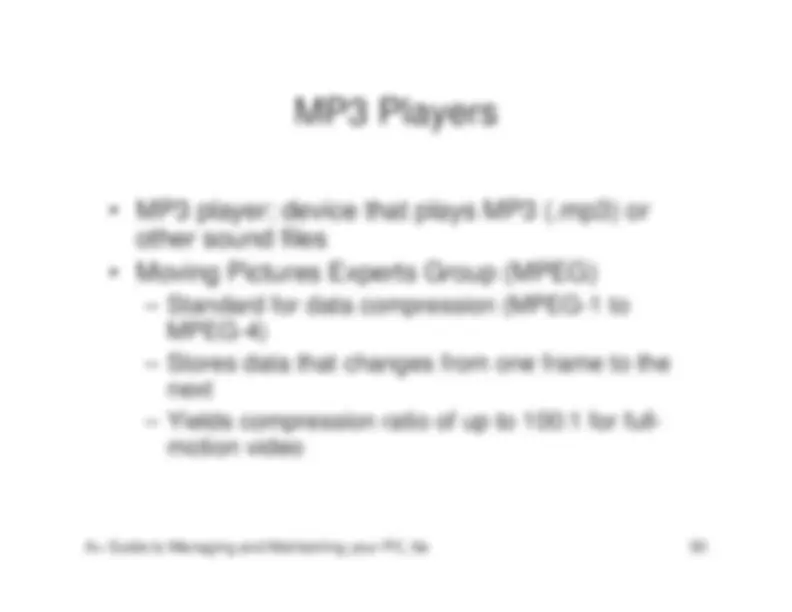
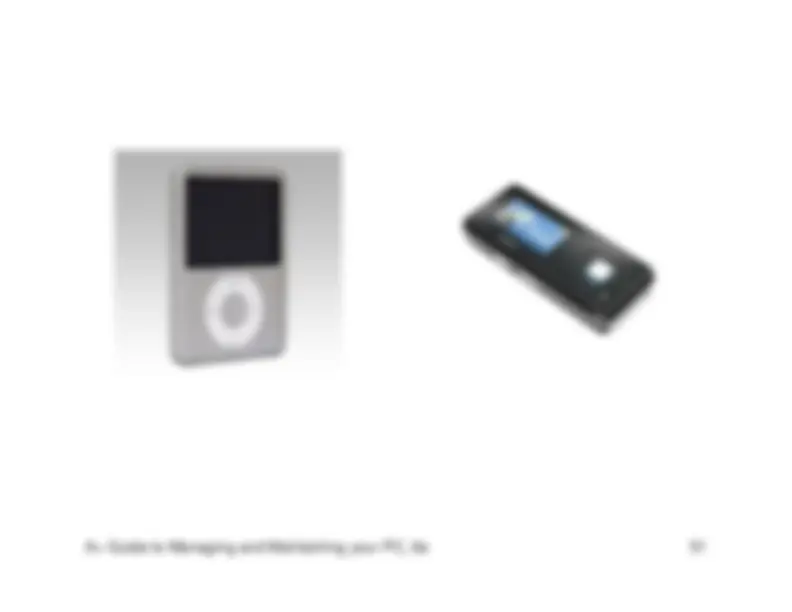
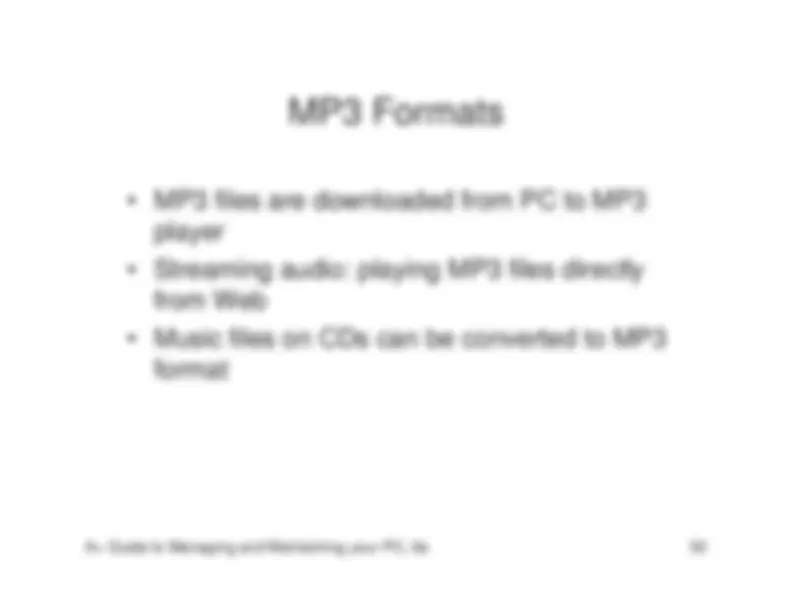
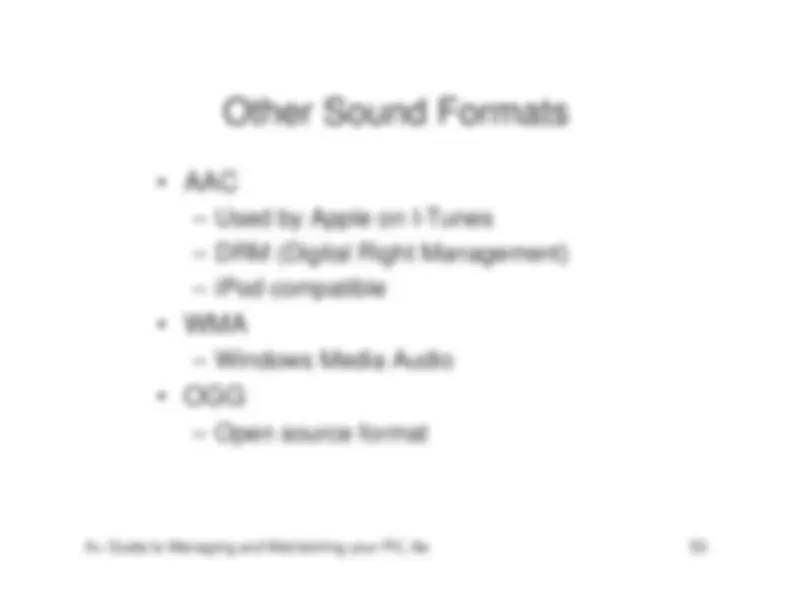
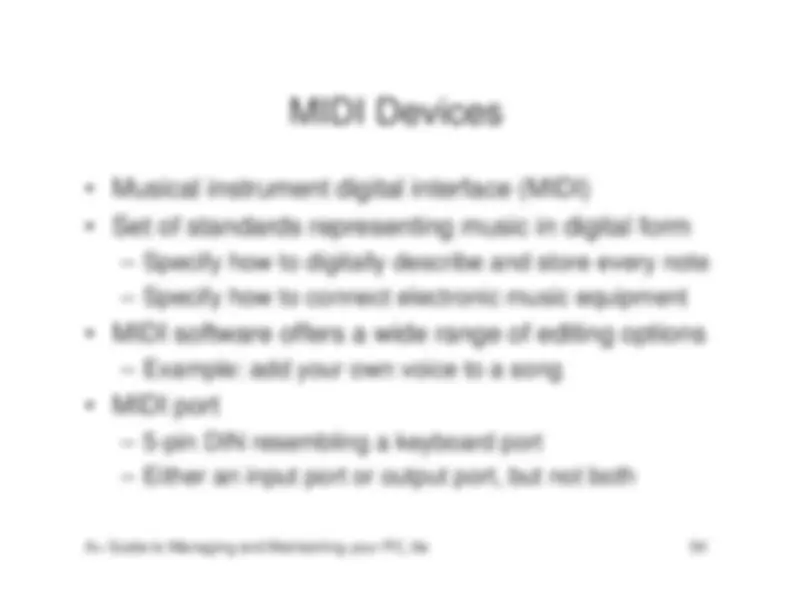
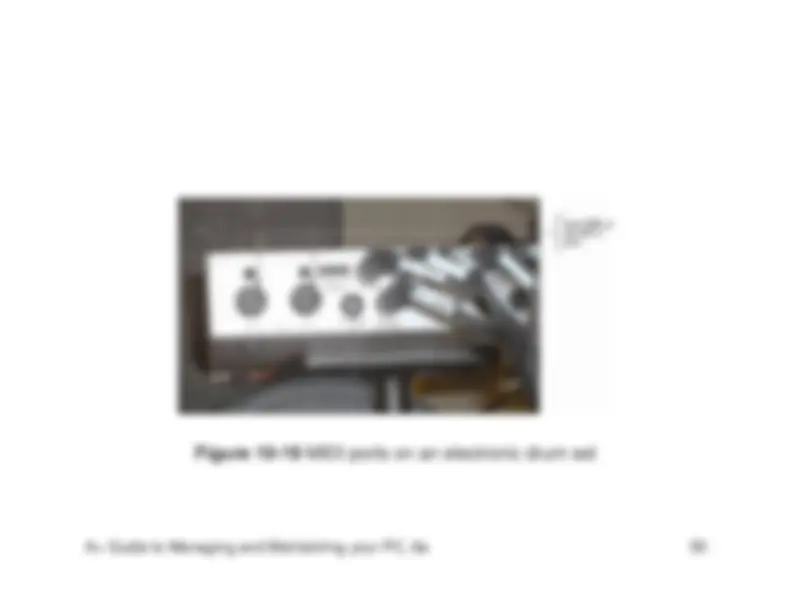
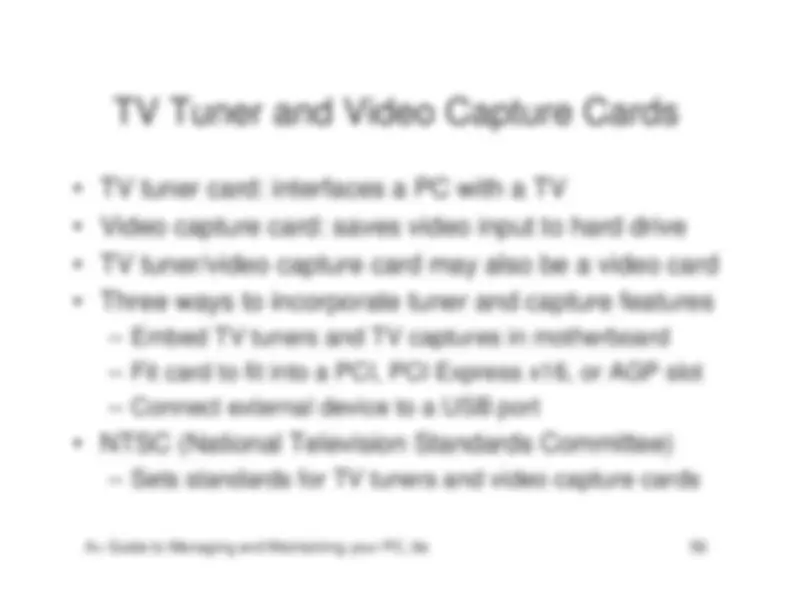
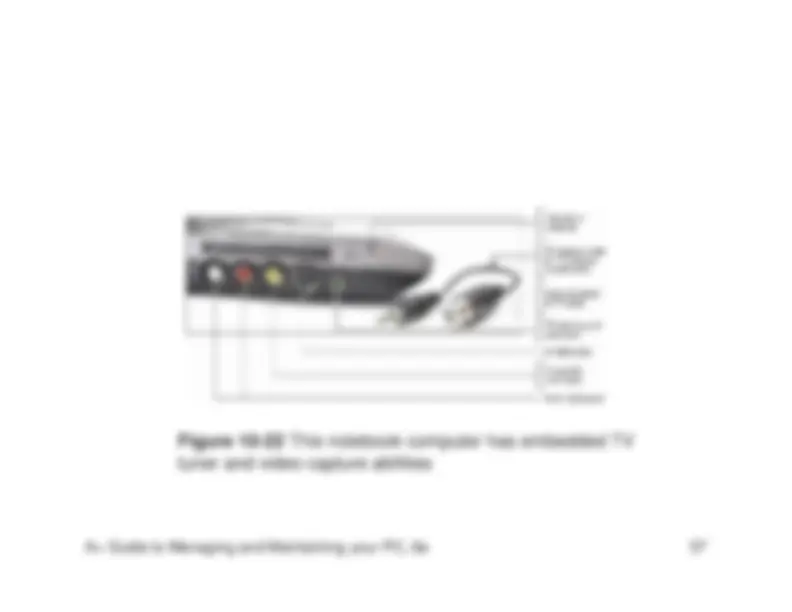
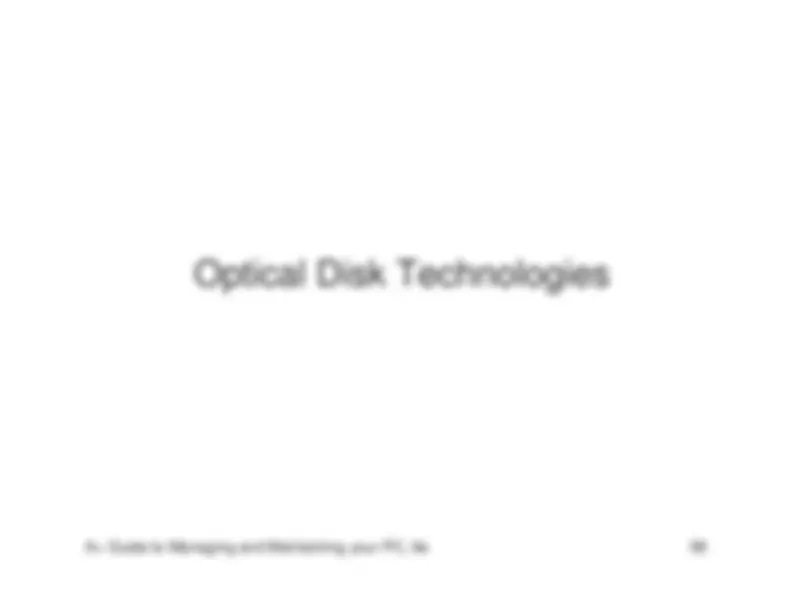
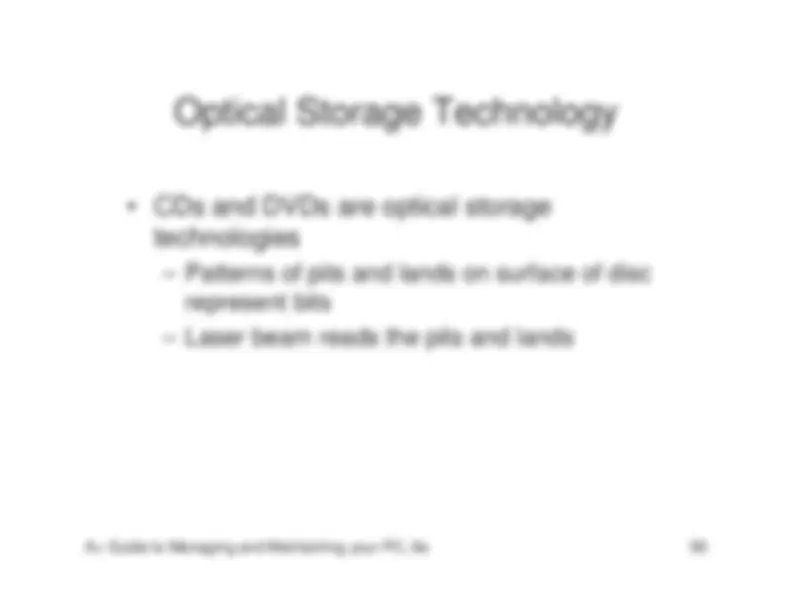
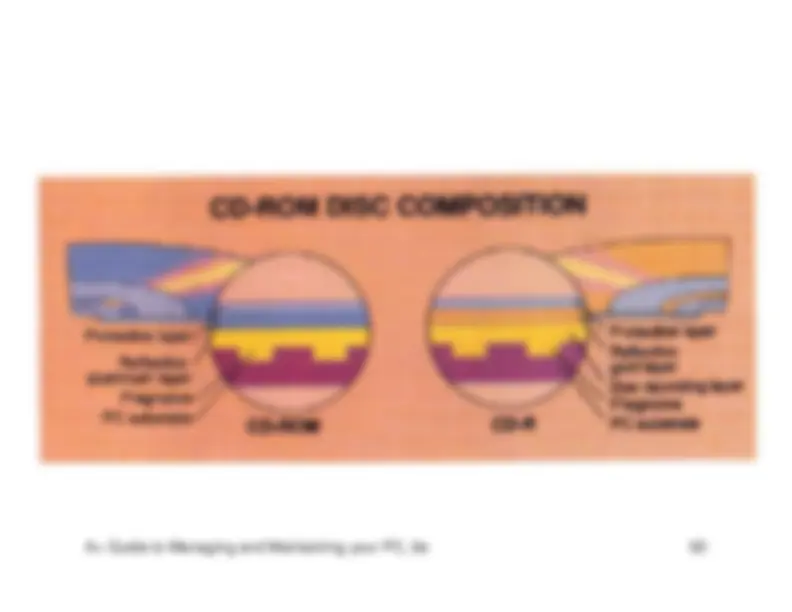
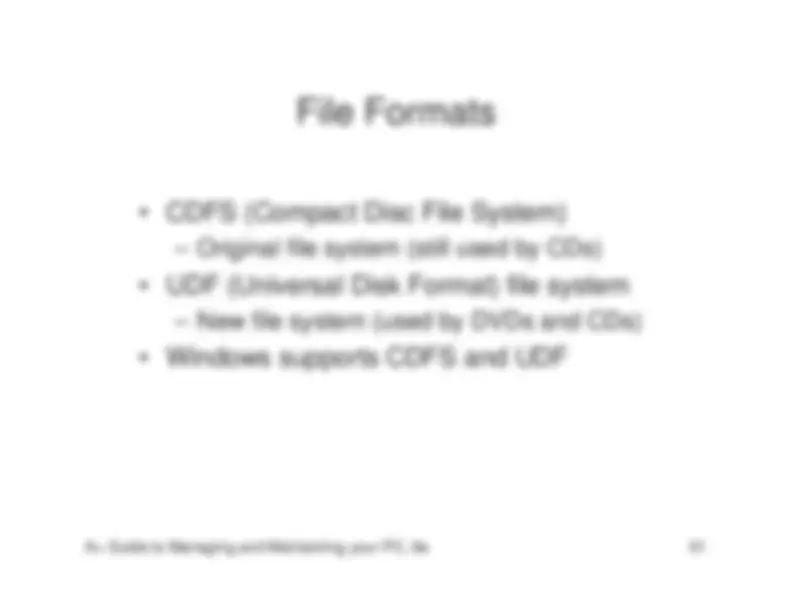
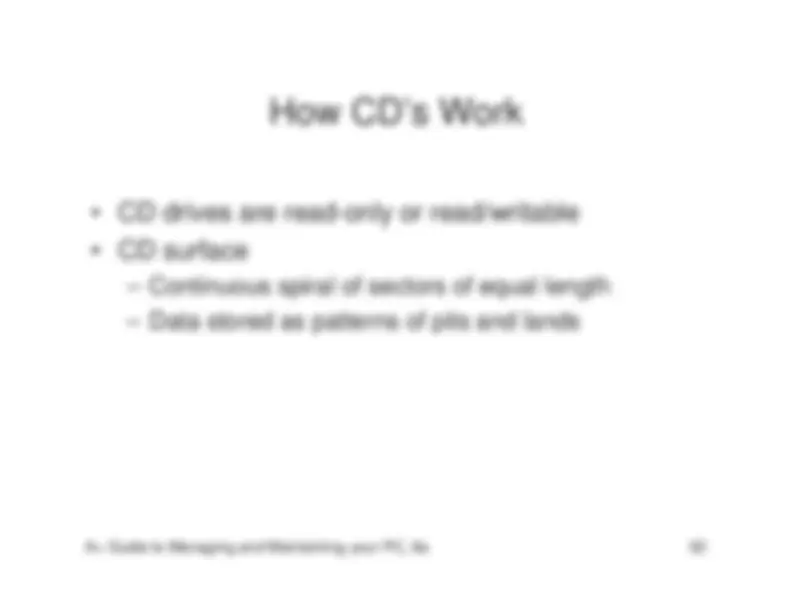
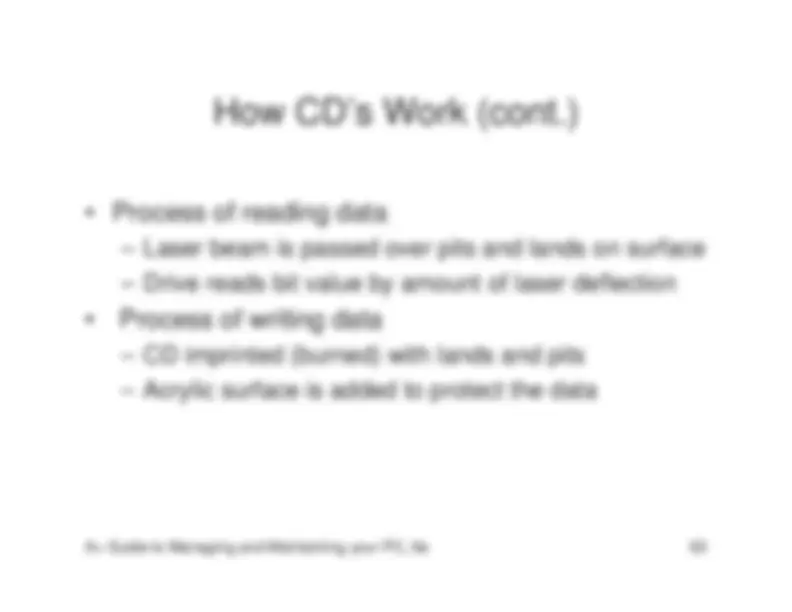
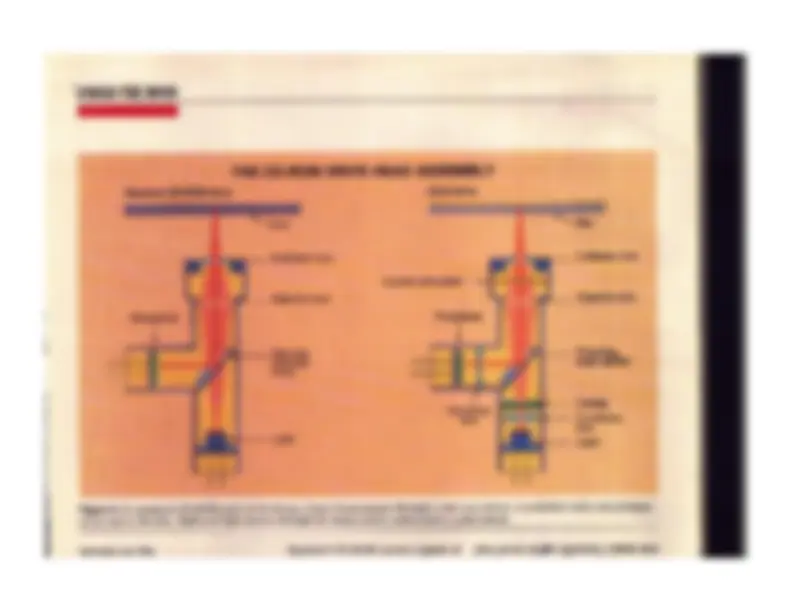
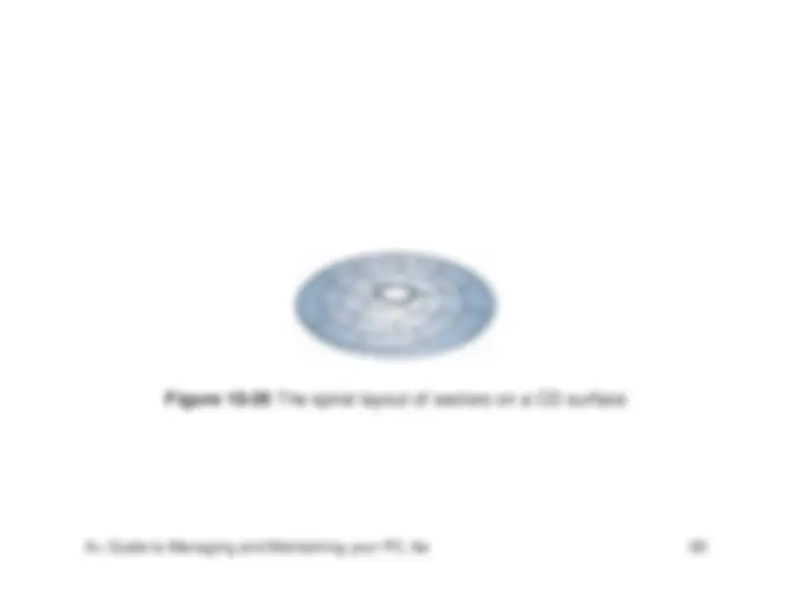
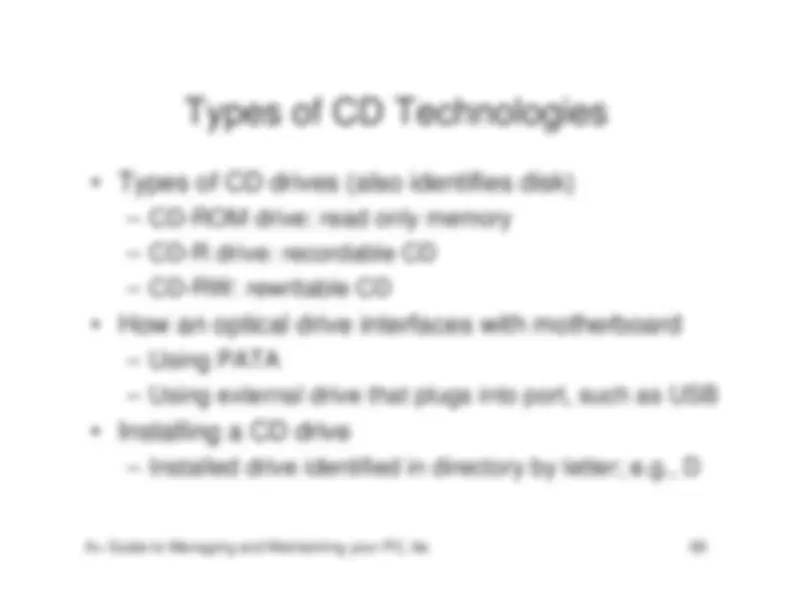
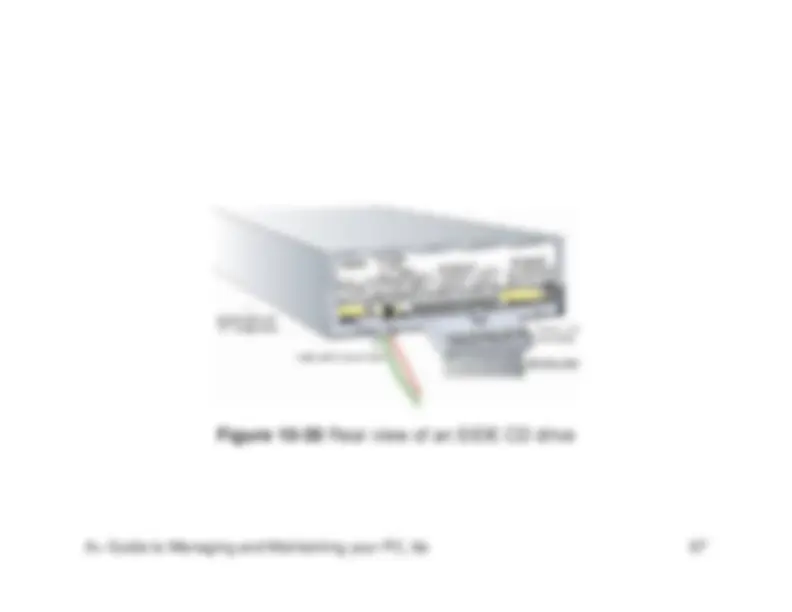
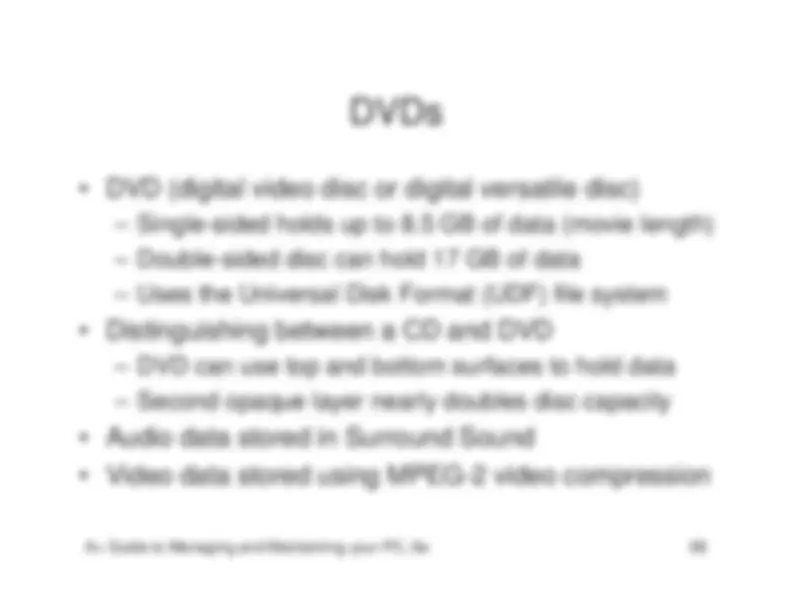
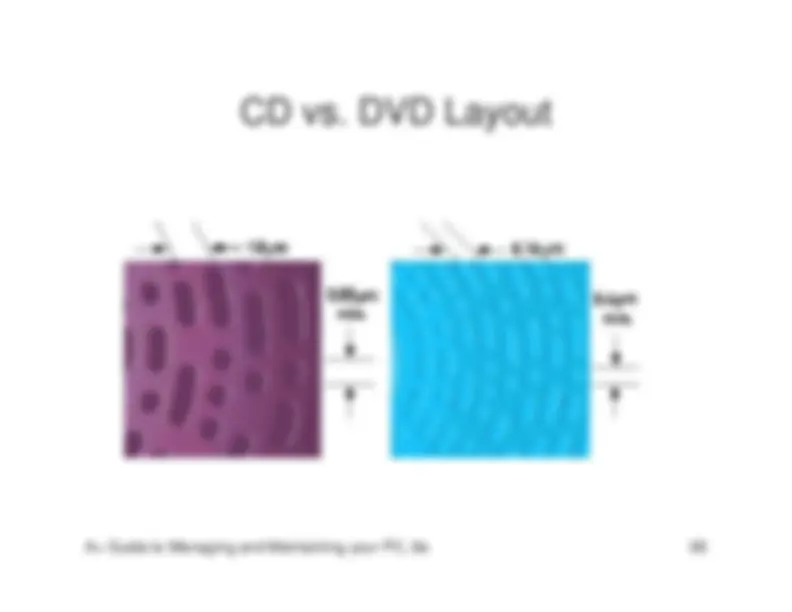
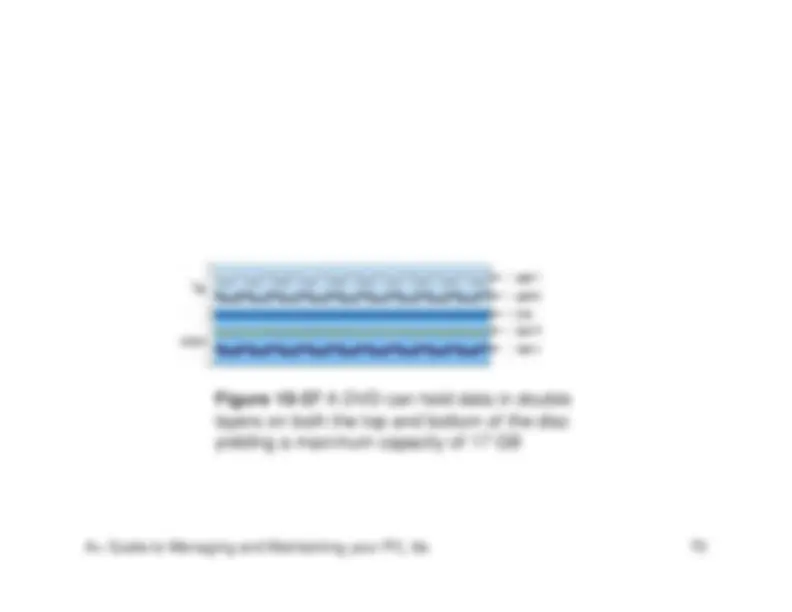
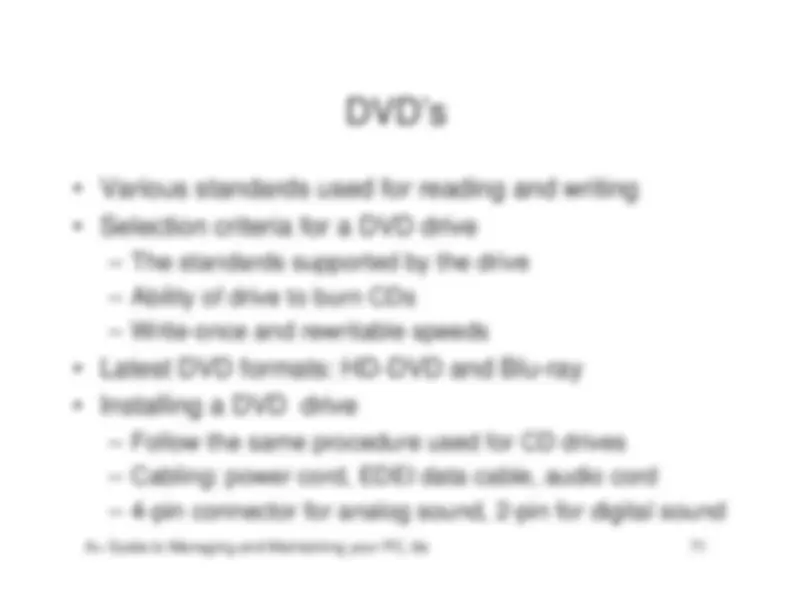
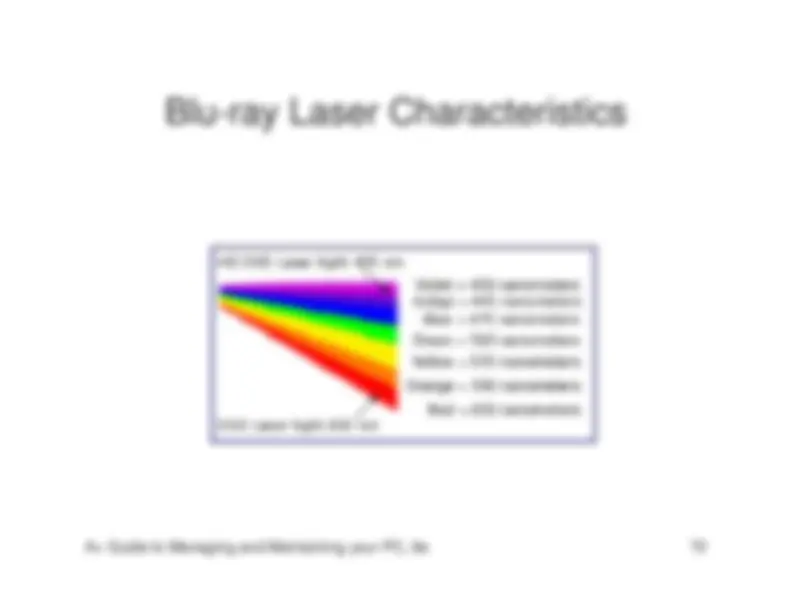
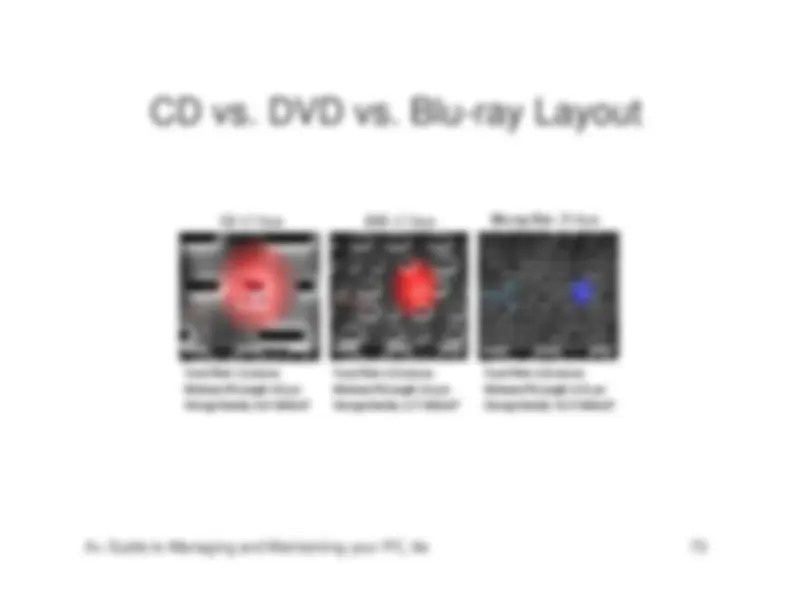
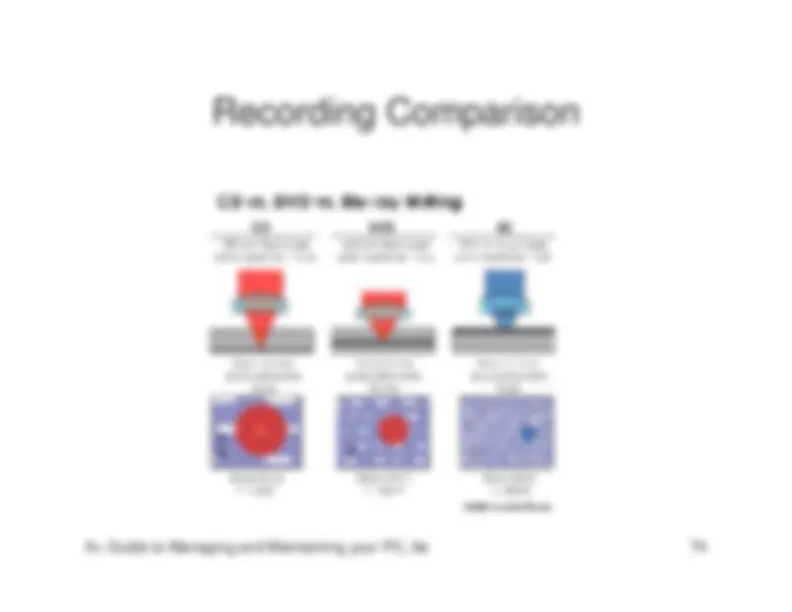
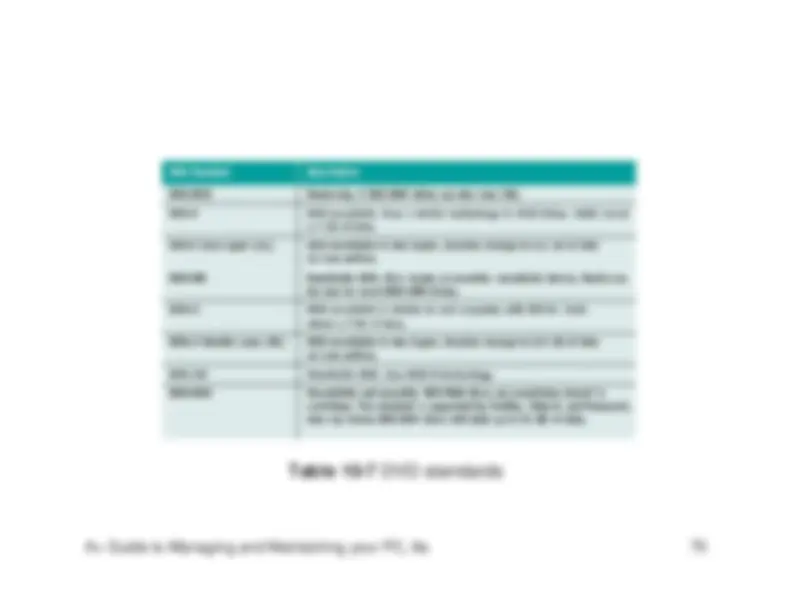
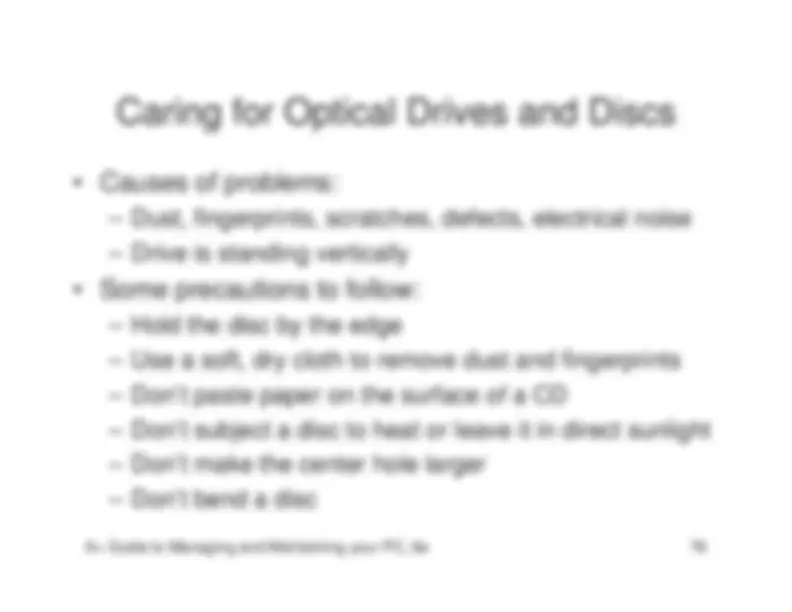
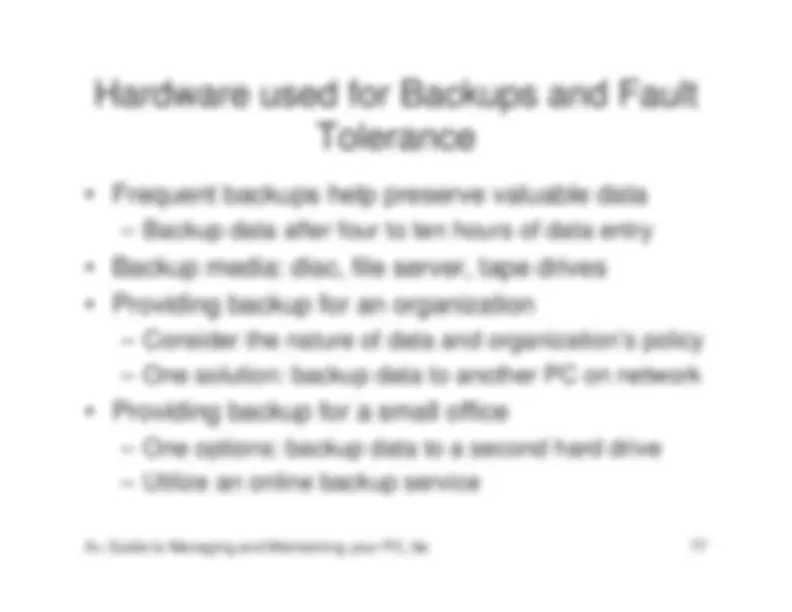
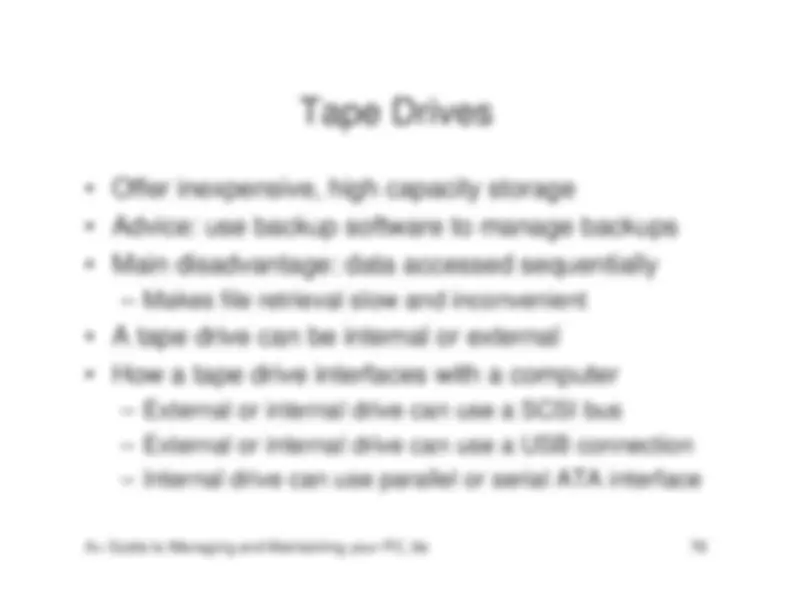
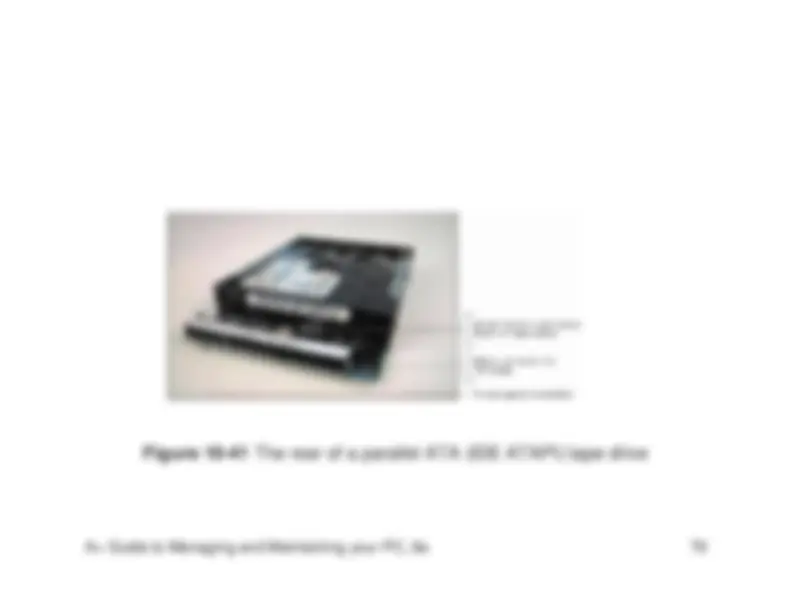
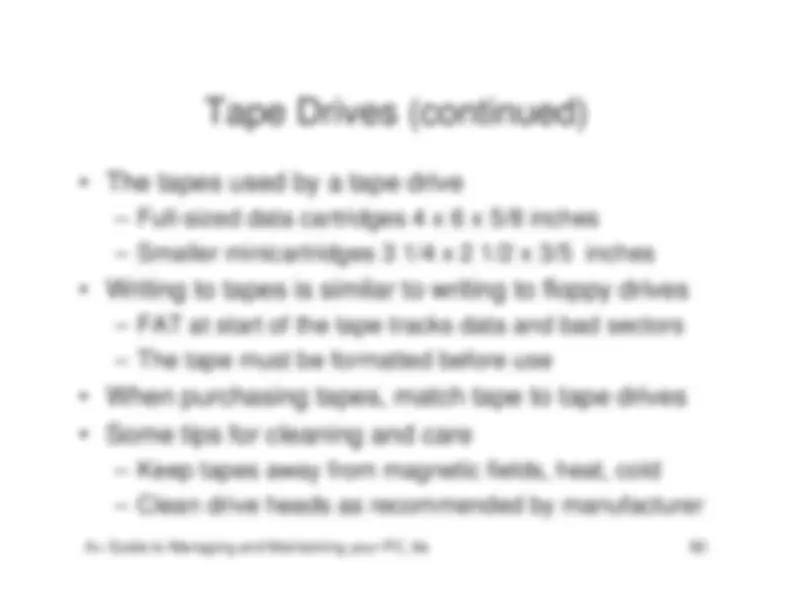
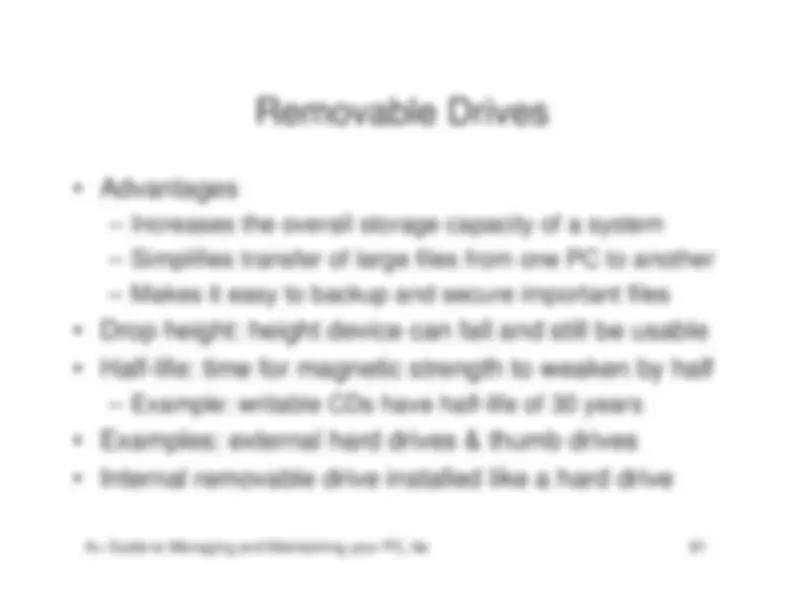
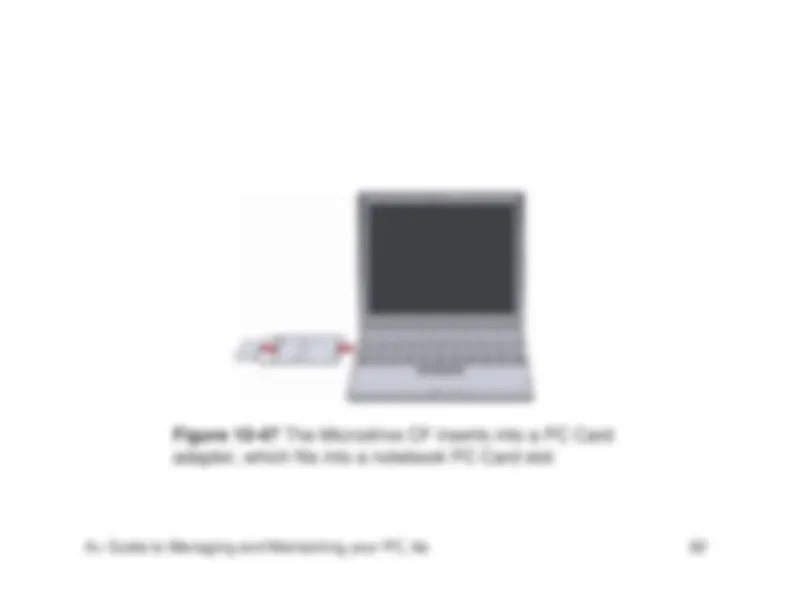
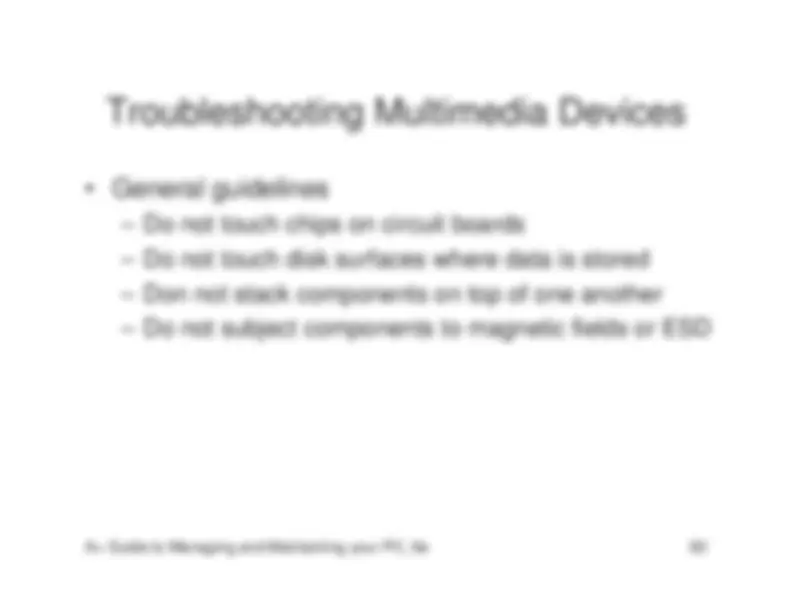
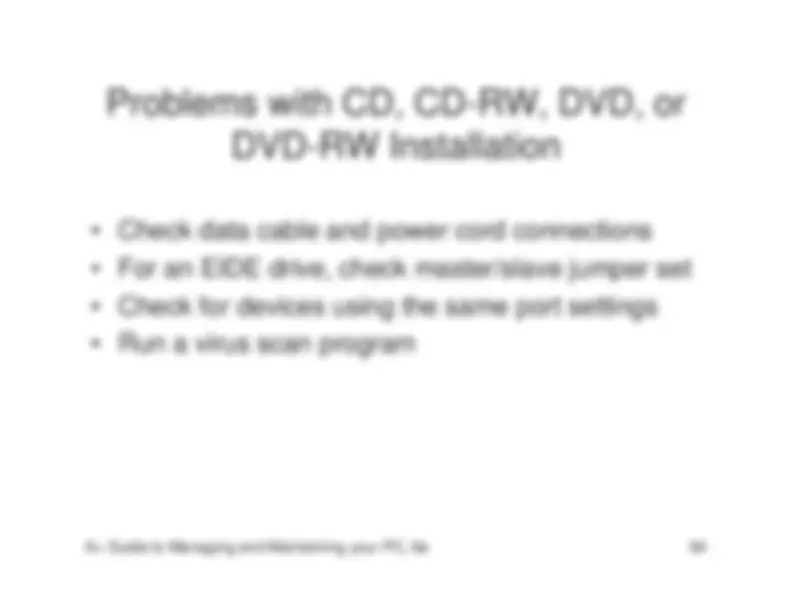
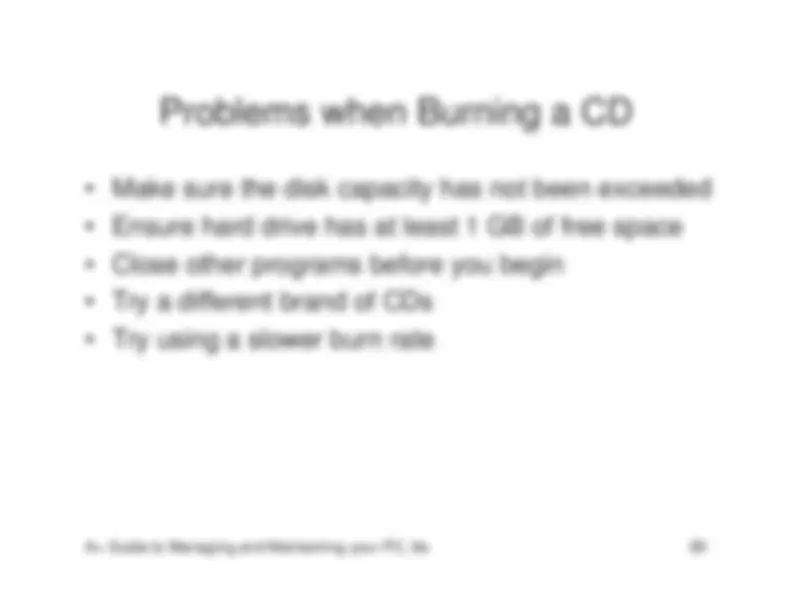
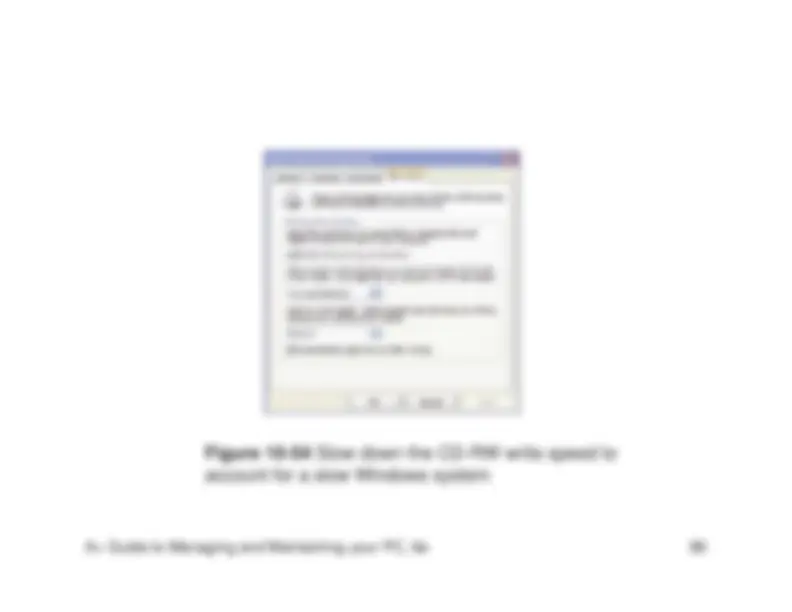
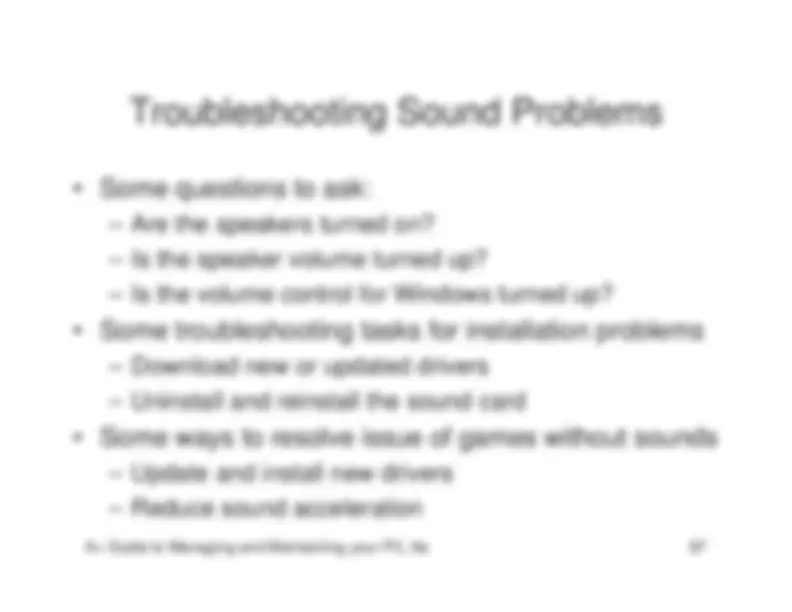
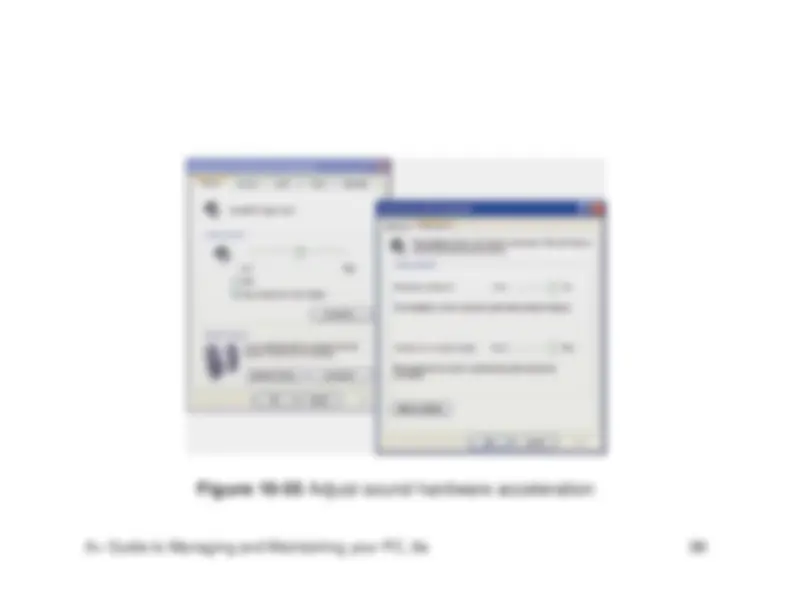


Study with the several resources on Docsity

Earn points by helping other students or get them with a premium plan


Prepare for your exams
Study with the several resources on Docsity

Earn points to download
Earn points by helping other students or get them with a premium plan
Community
Ask the community for help and clear up your study doubts
Discover the best universities in your country according to Docsity users
Free resources
Download our free guides on studying techniques, anxiety management strategies, and thesis advice from Docsity tutors
This chapter from the a+ guide to managing and maintaining your pc (6e) explores the use of multimedia devices and mass storage on pcs. It covers the differences between cyberspace and reality, multimedia on pcs as an entertainment device and hub for other devices, streaming data, cpu technologies for multimedia, digitizing analog data, sampling rate, ac '97 and intel hda, integrated audio problems, add-on sound cards, digital cameras, flash memory devices, webcams, mp3 players, midi devices, tv tuner and video capture cards, cd technologies, dvds, and caring for optical drives and discs.
Typology: Study notes
1 / 88

This page cannot be seen from the preview
Don't miss anything!

















































































Goal: generate output that emulates reality
-^
Differences between cyberspace and realspace^ – Sights and sounds in reality are continuous
(analog)
digital)
Challenge: bridge world of cyberspacewith reality
PC as a hub for other devices^ – MP3 players– Cell phones– Digital cameras
Flow and/or the processing of datacannot be interrupted without affectedthe quality
-^
Examples:^ – audio & video
Operations a CPU can perform^ – MMX and SSE help with repetitive looping– SSE improves 3D graphics
-^
Pentium 4 can use MMX, SSE, SSE2,SSE3, HT
-^
AMD uses 3DNow!, HyperTransport!,PowerNow!
Data must be converted from analogformat to a digital format
-^
Sampling rate & resolution
How often an analog signal (video oraudio) is sampled.
-^
Measured in hertz
-^
Higher sampling rates = better fidelitybut generate more data (larger files)
Digitize a 60 second audio clip at asampling rate of 4 Khz and aresolution of 8 bits^ –
(8 bits x 4,000 hz x 60 seconds) / 8 = 240,000 bytes
Digitize the same 60 second audio clipat a sampling rate of 44.1 khz at aresolution of 16 bits^ –
(16 bits x 44,100 hz x 60 seconds) / 8 = 5,292,000 bytes
A+ Guide to Managing and Maintaining your PC, 6e
Multimedia files are very large
-^
Need to conserve disk space and networkbandwidth
-^
The multimedia features on the Internet rely ondata compression^ – Video streaming (You Tube)– Digital Audio (iTunes, Napster)
A+ Guide to Managing and Maintaining your PC, 6e
Example: 1024 x 768 x 24 bit color depth image^ –
1024 x 768 x 24 / 8 =
2,359,296 bytes
Based on data having repeated patterns
-^
Lossless^ – No loss of information when the data is
compressed
Lossy^ – Some loss of data when data is compressed
How much is a file compressed
-^
Expressed as ratio^ – Uncompressed size is 100K– Compressed size is 25K–
Compression ratio is 4:1 or 1: